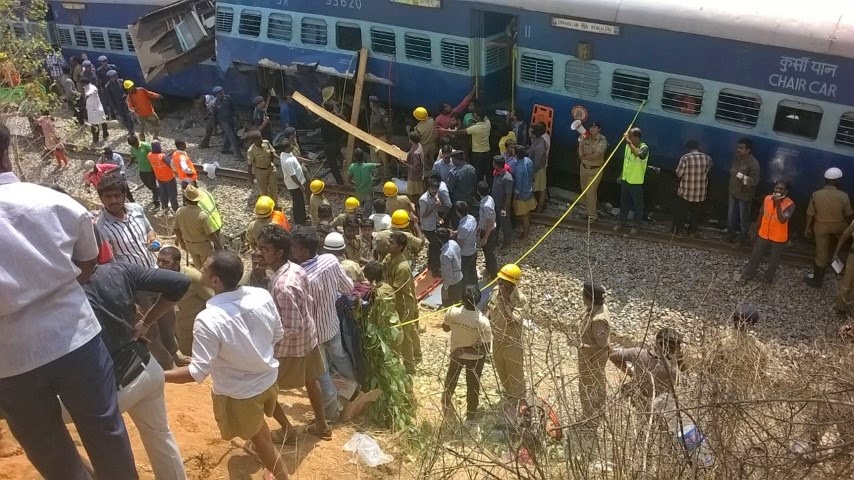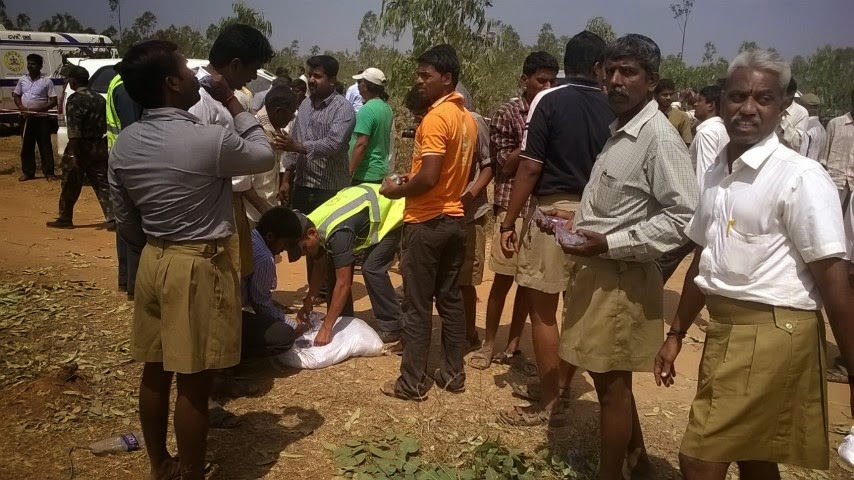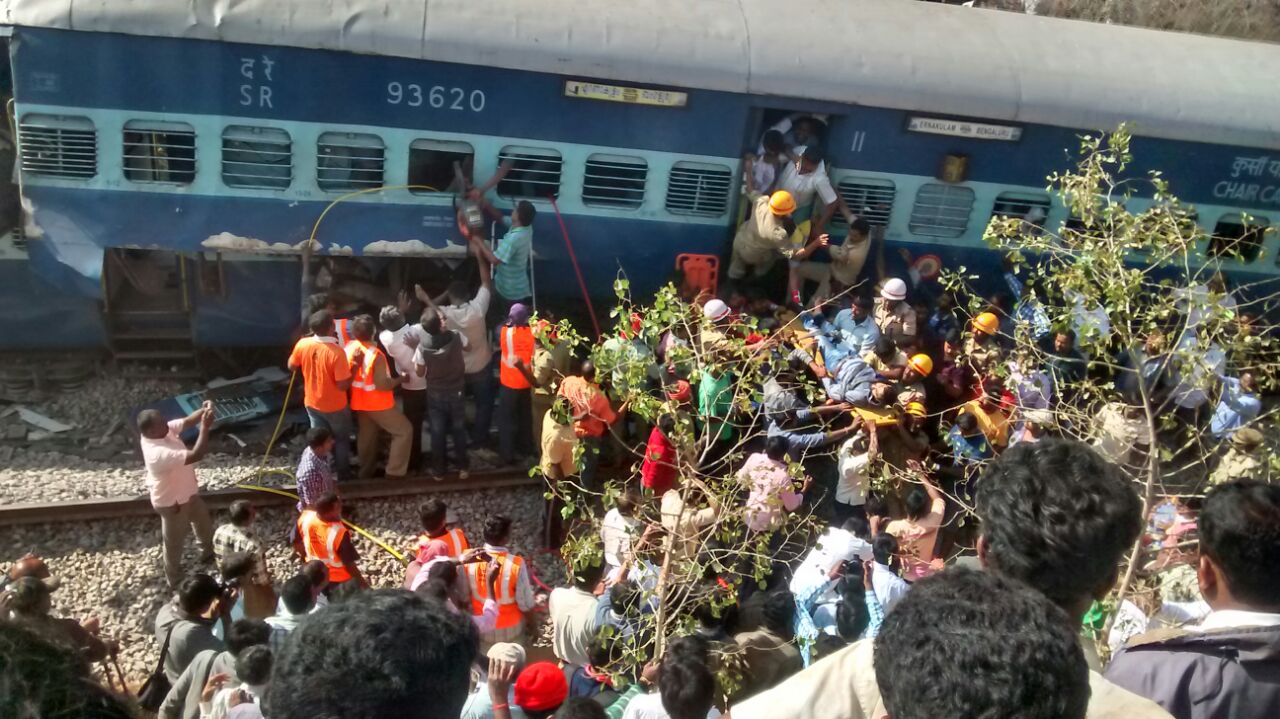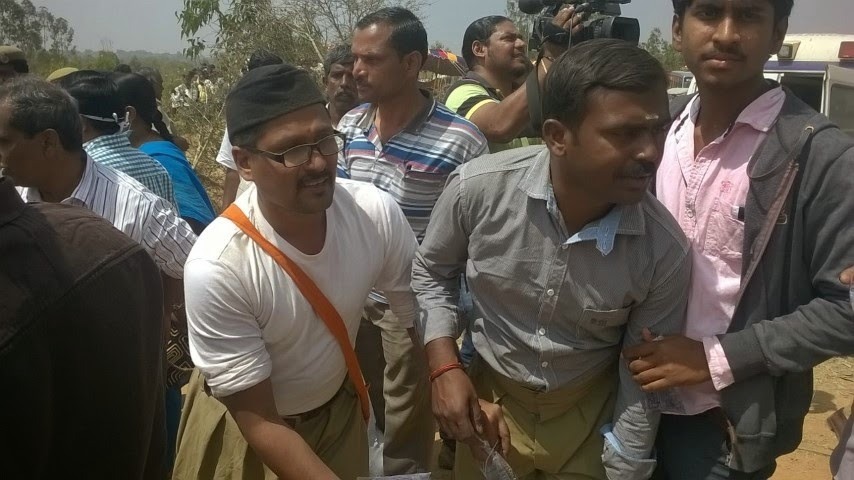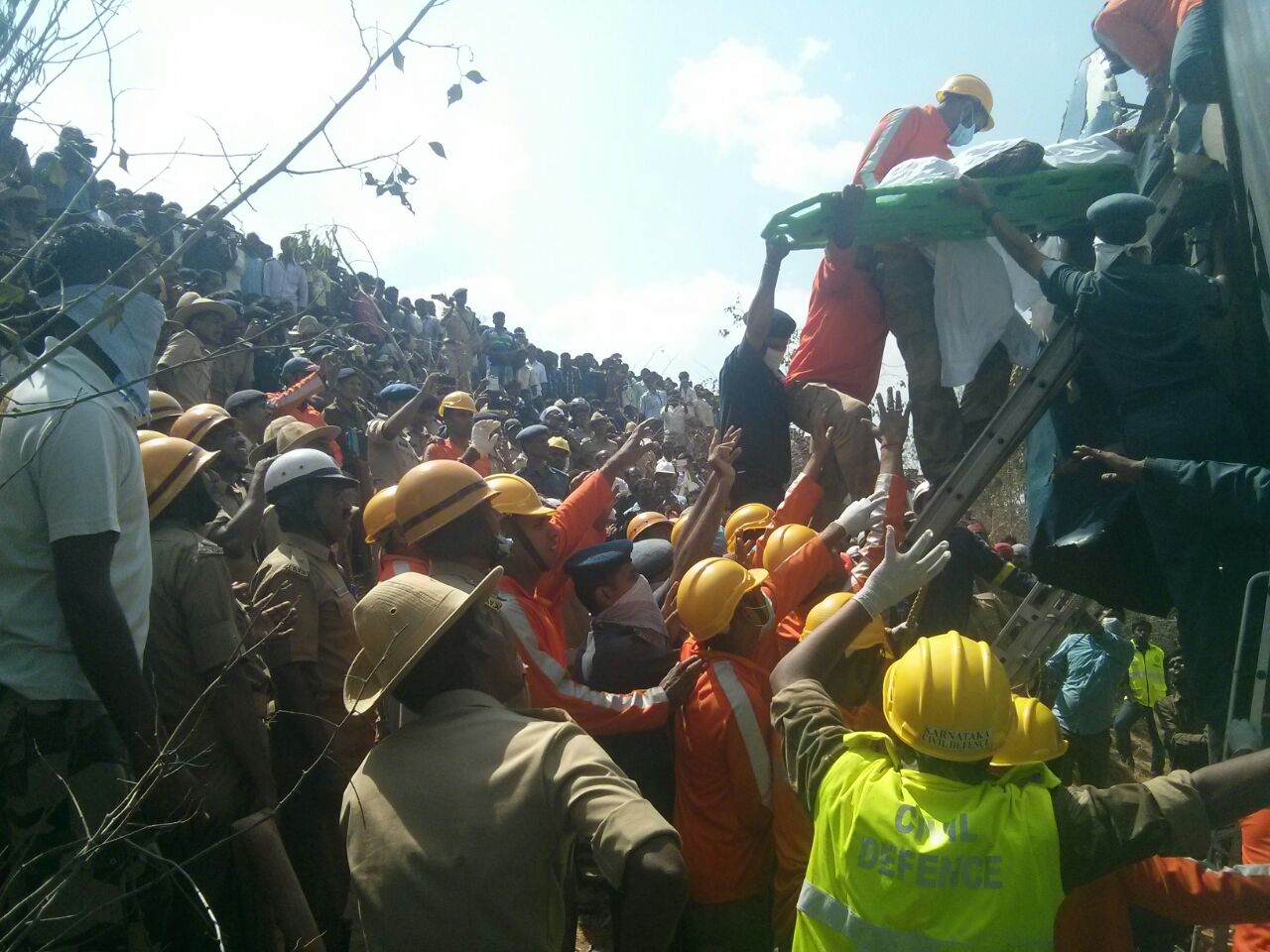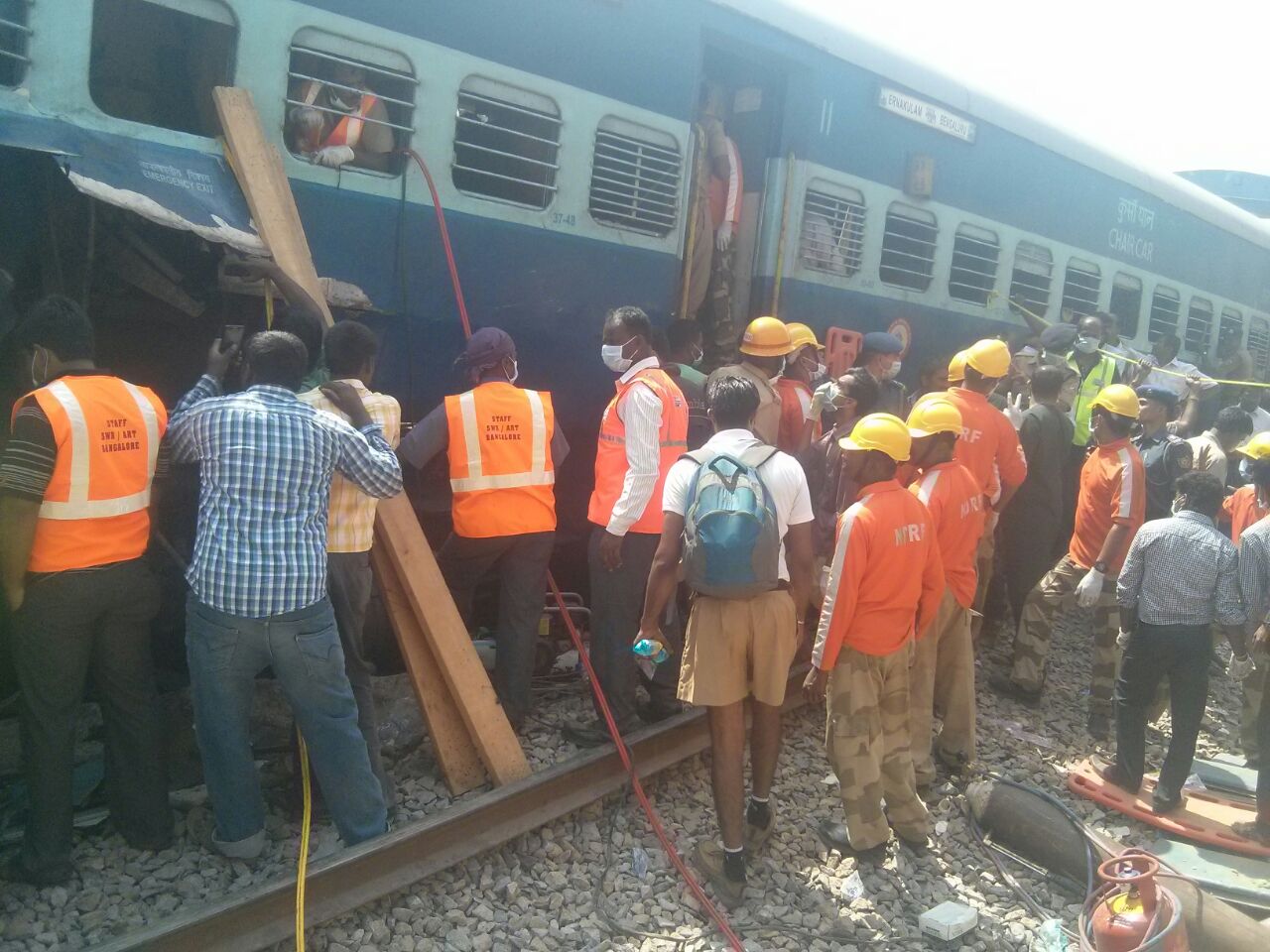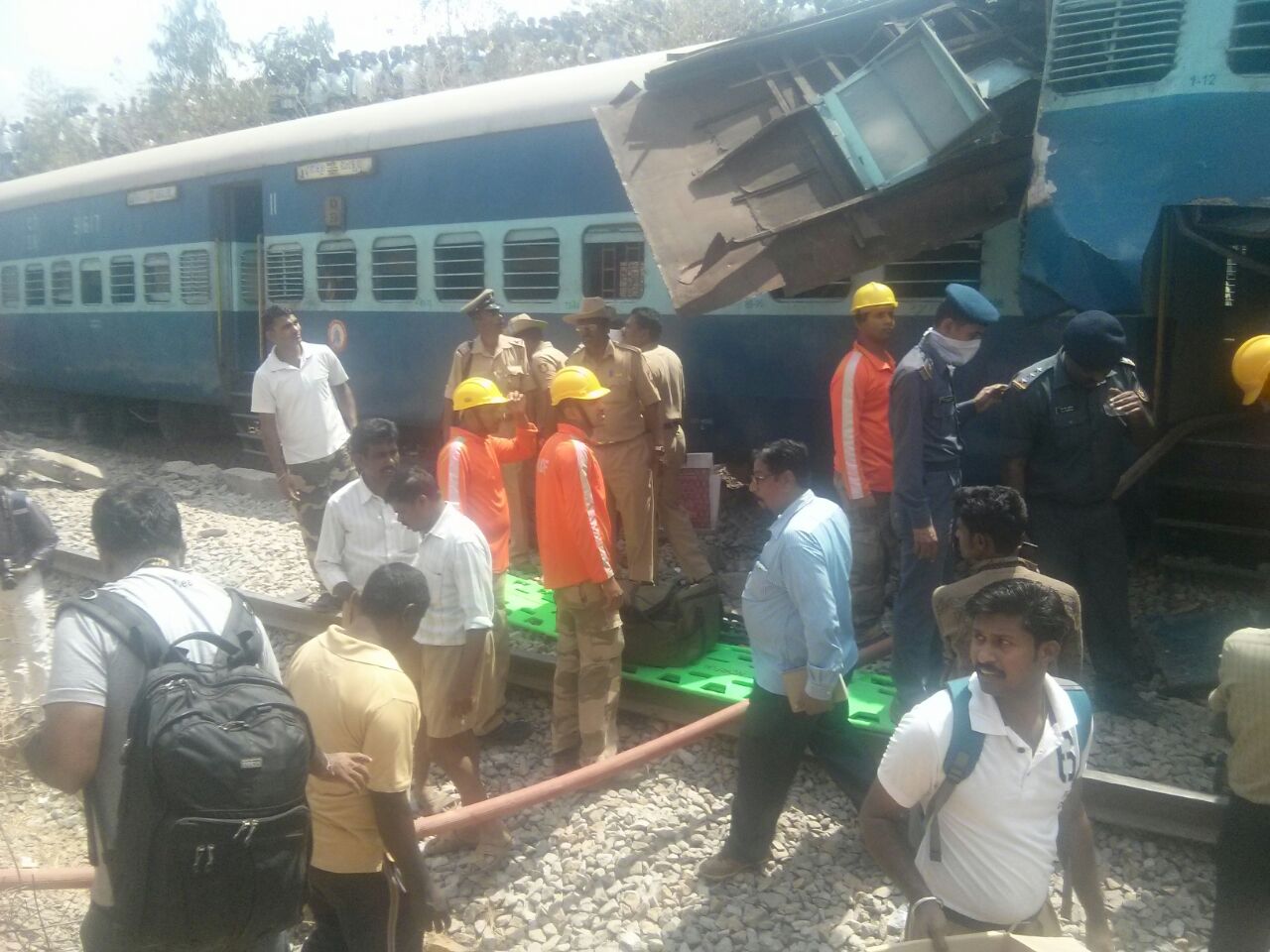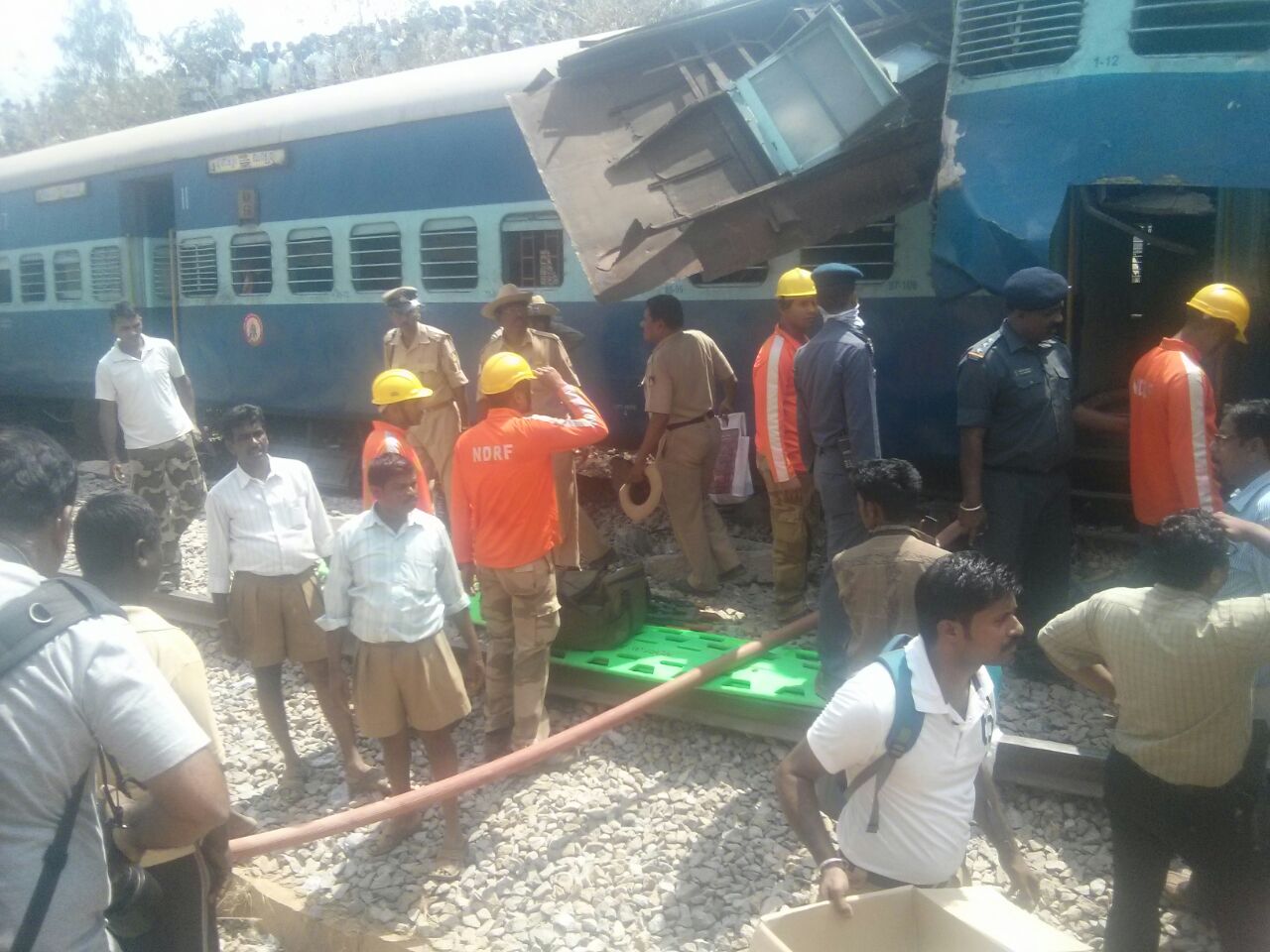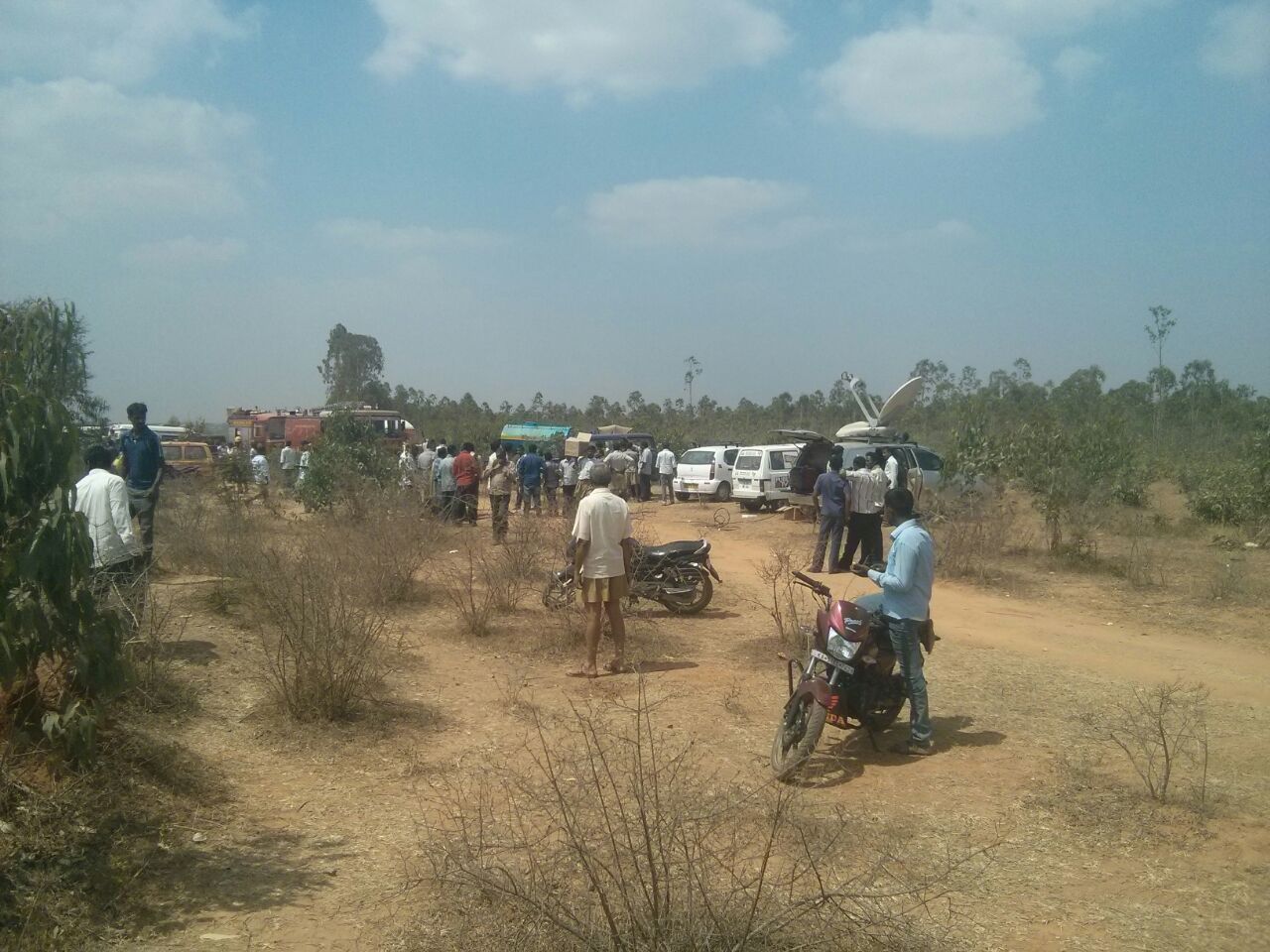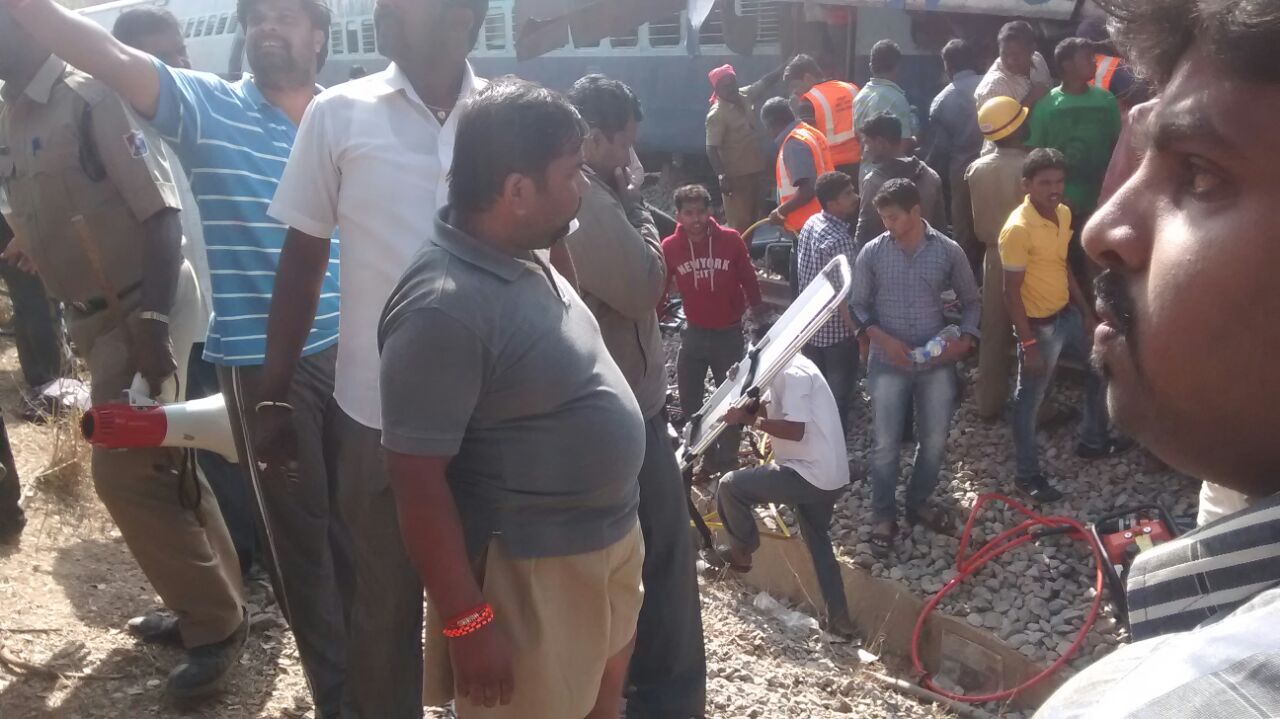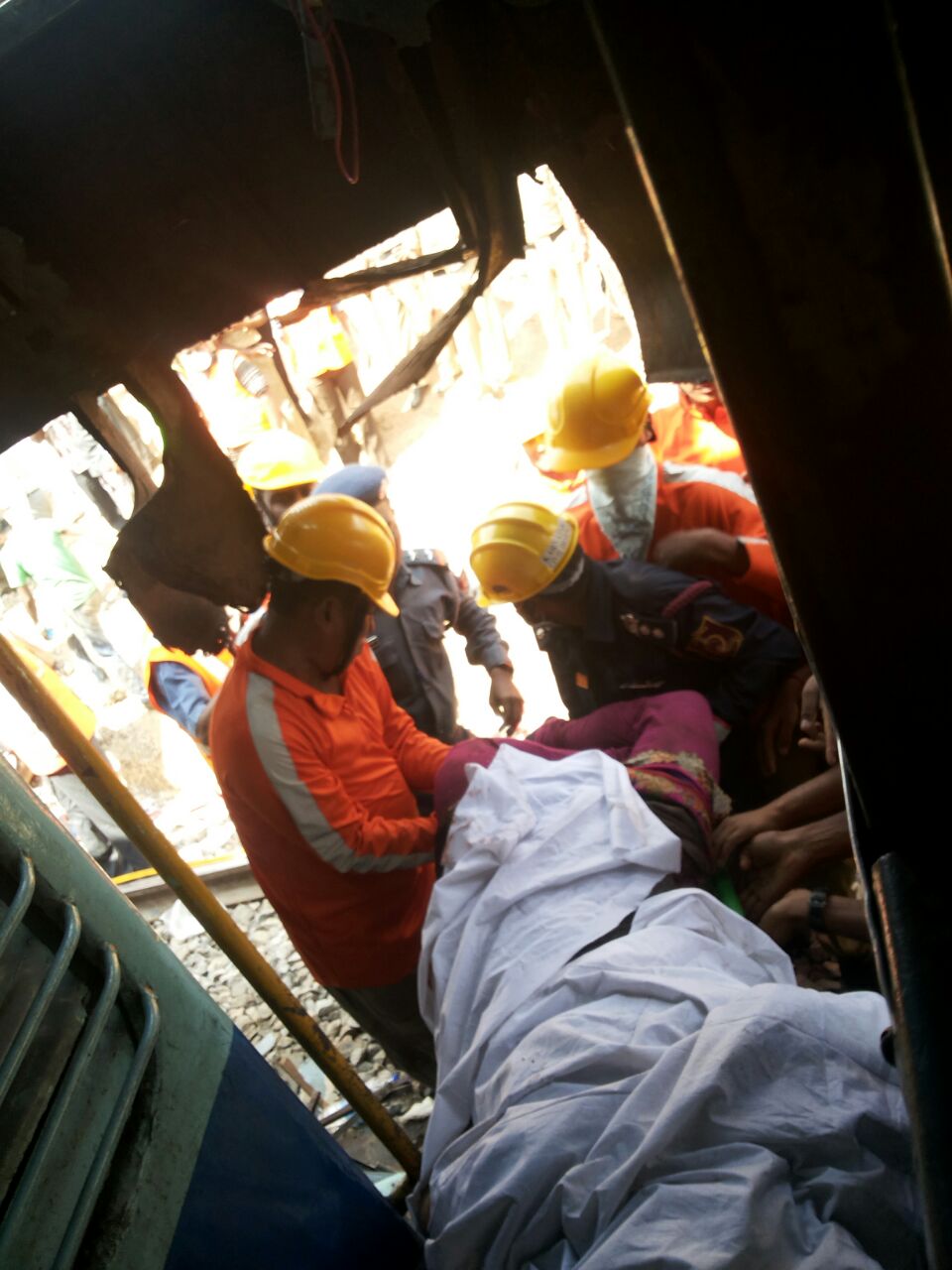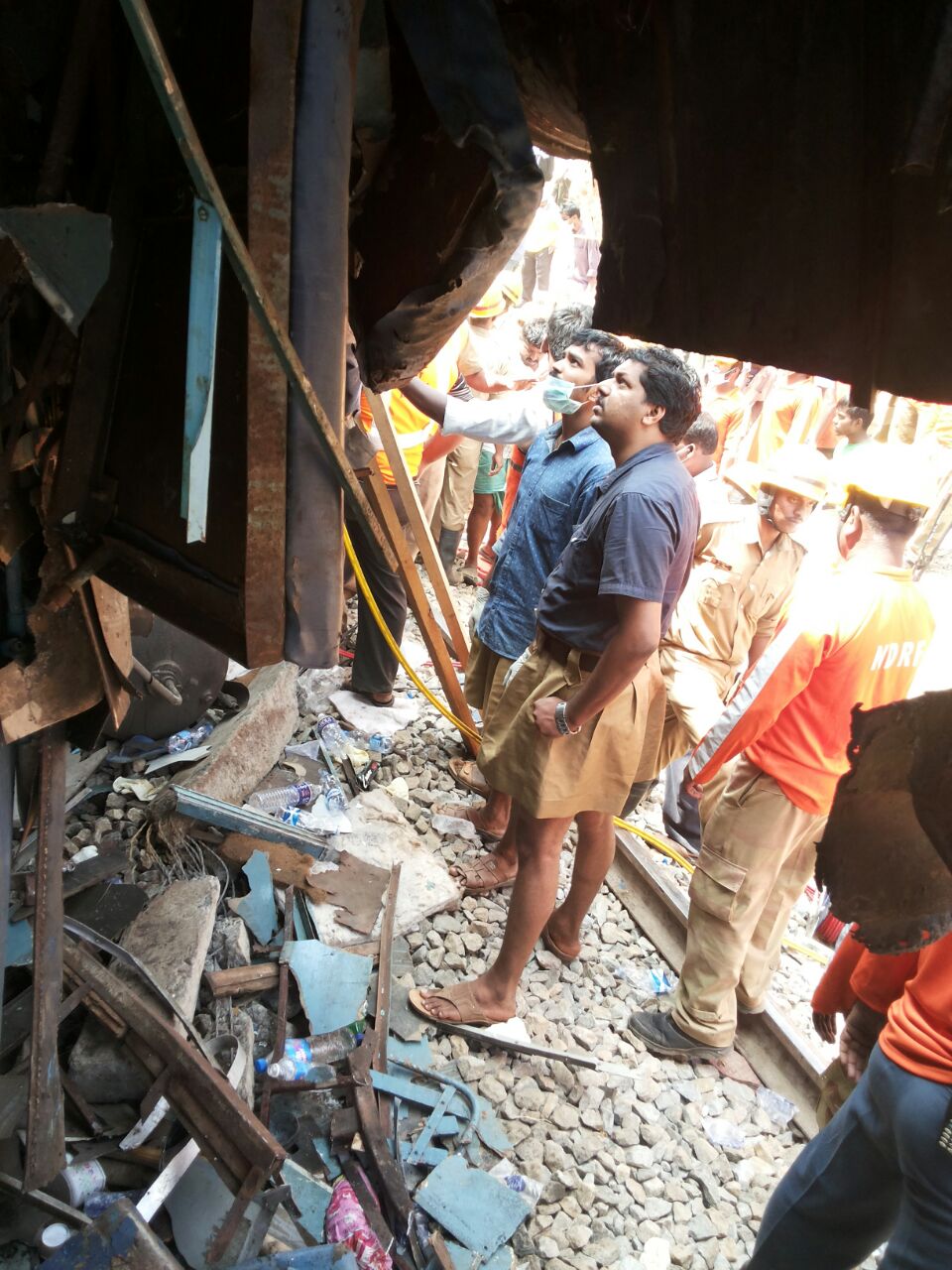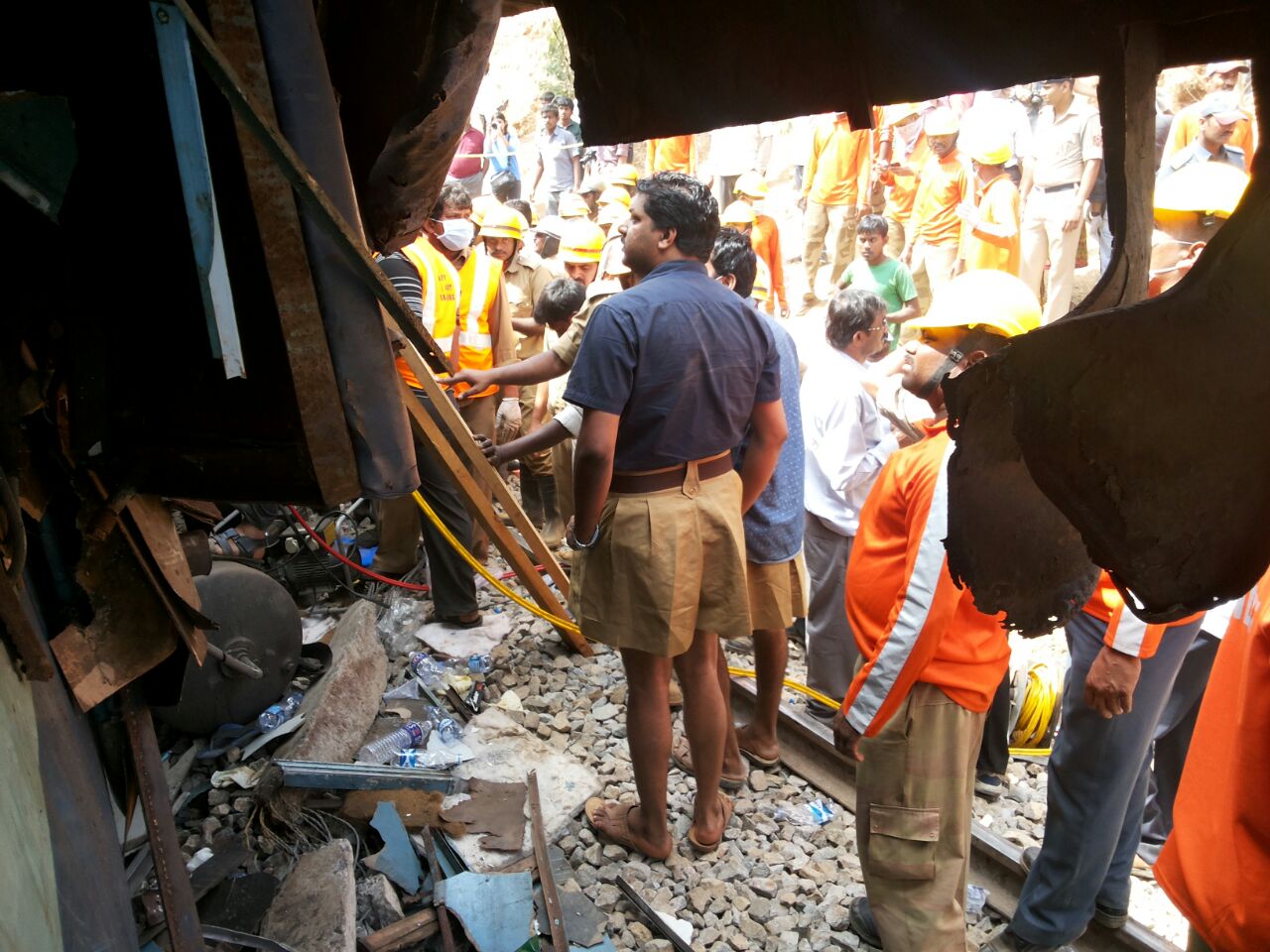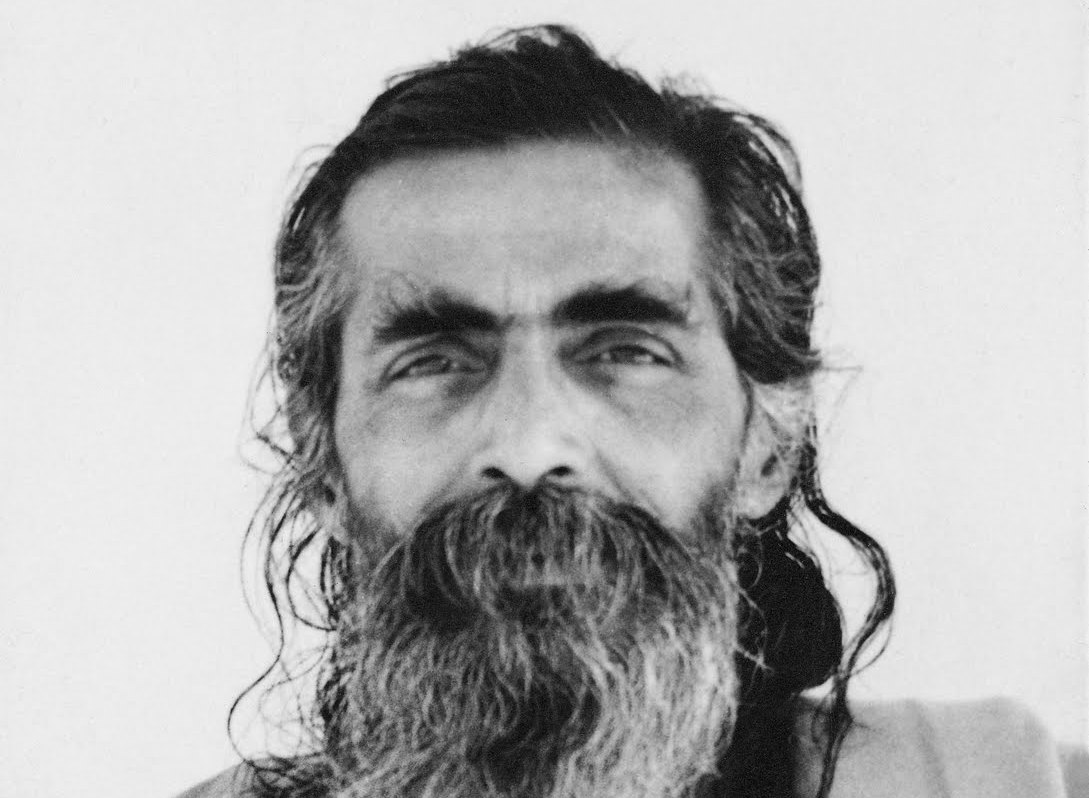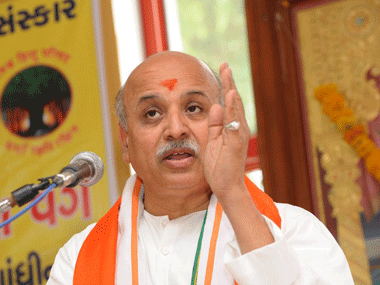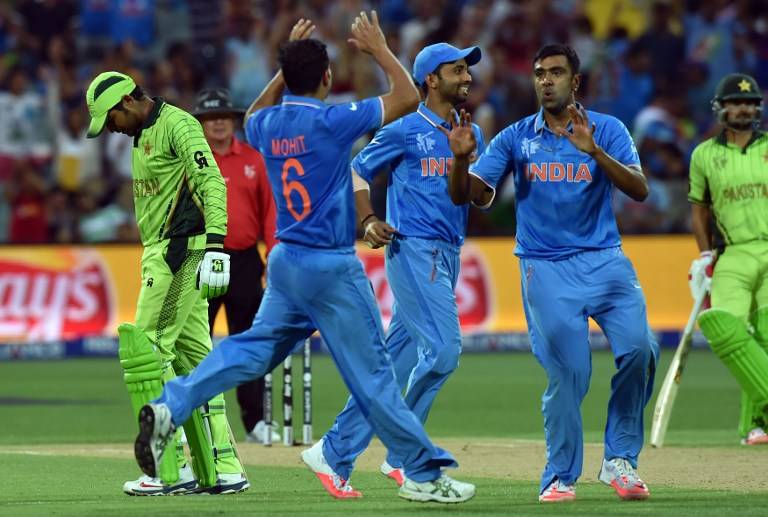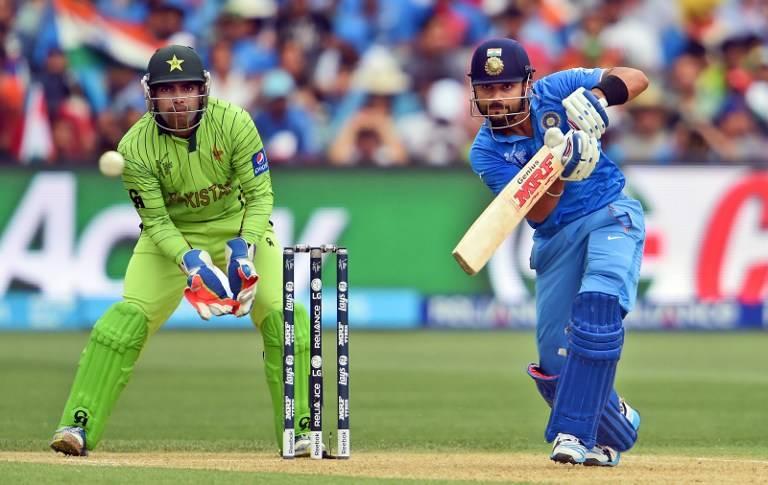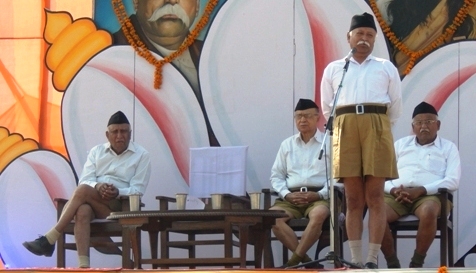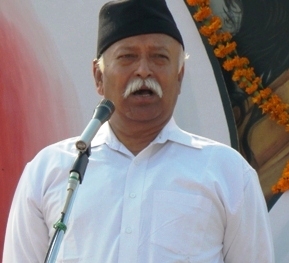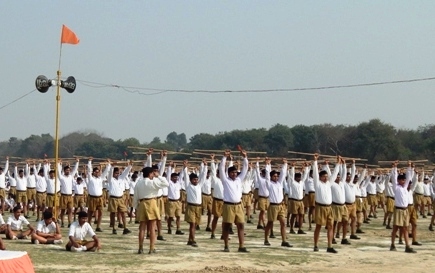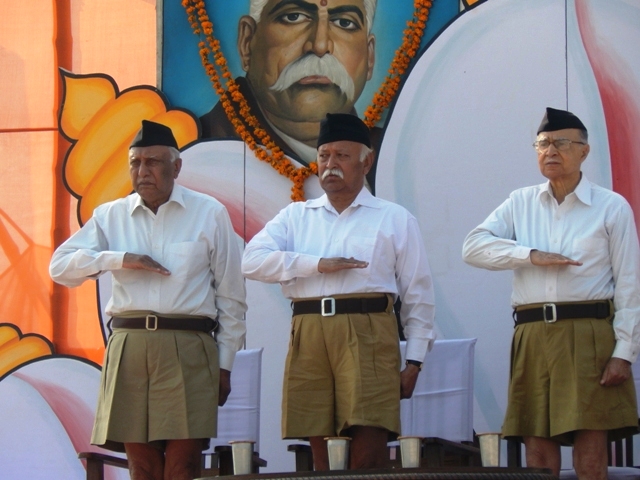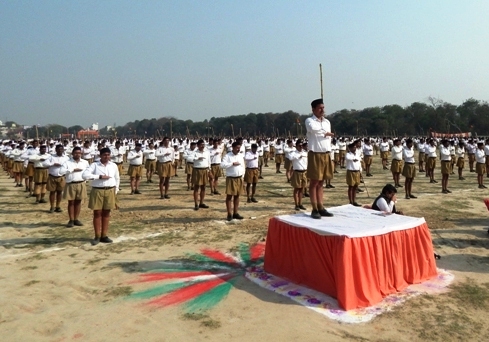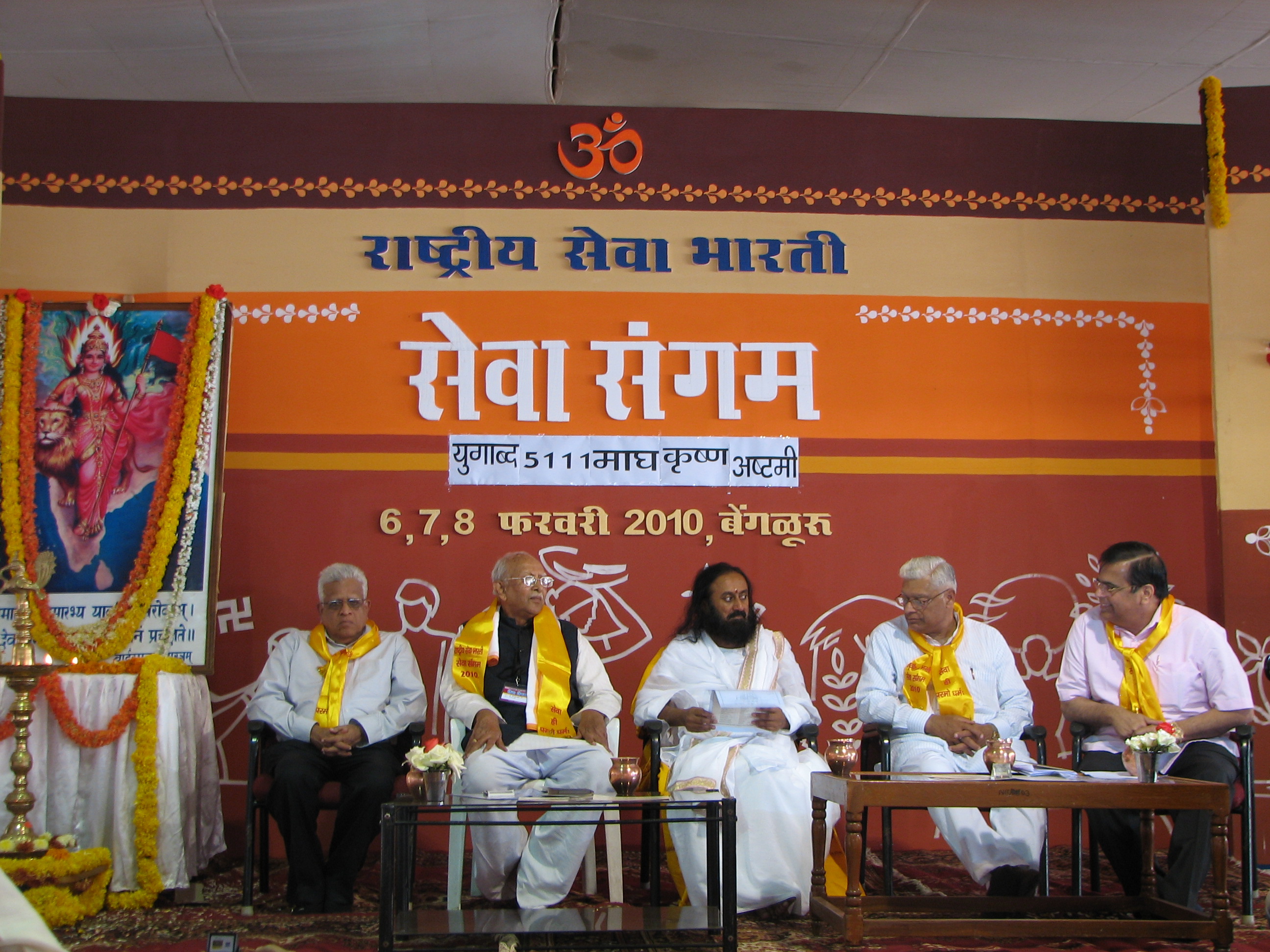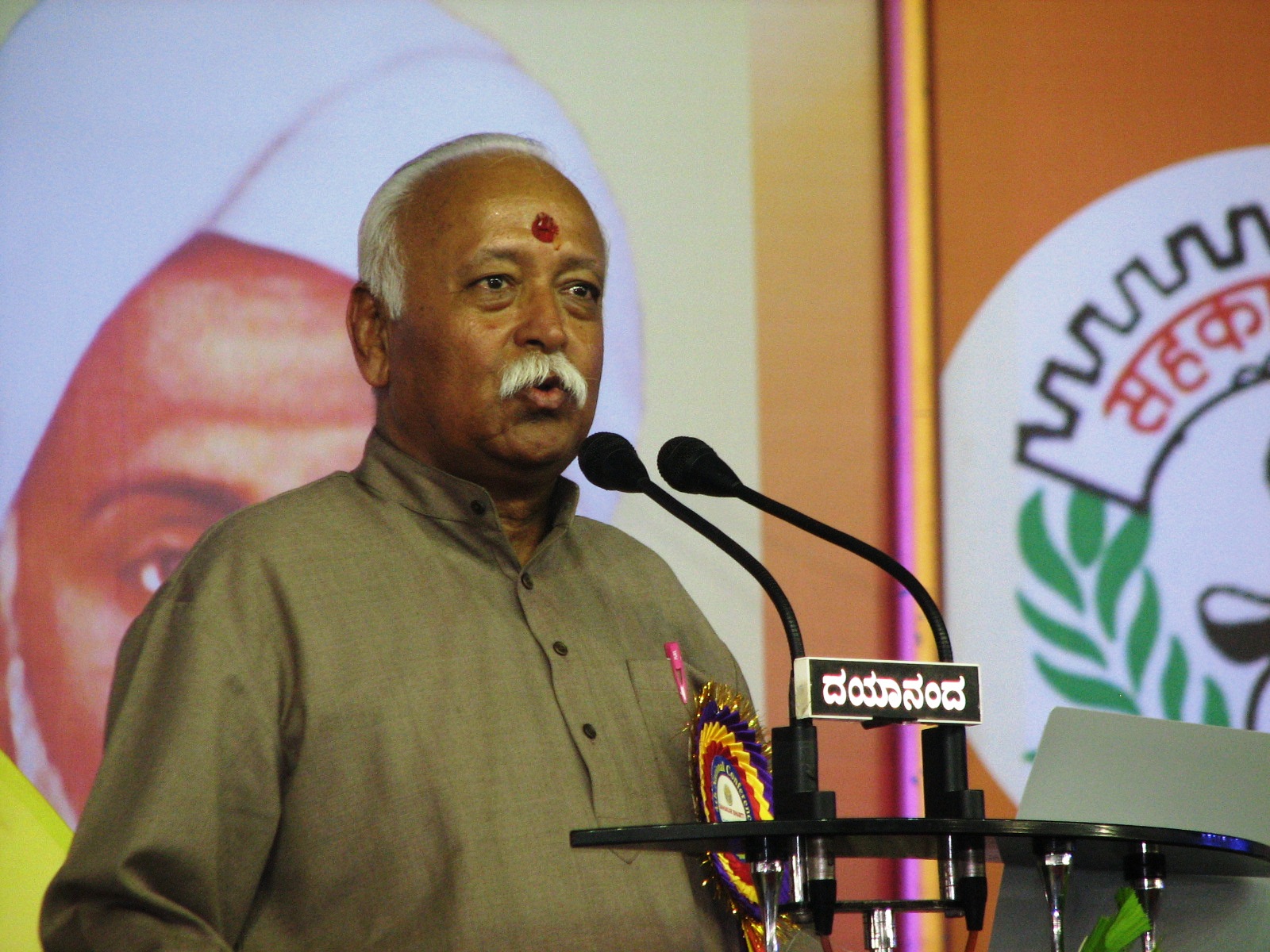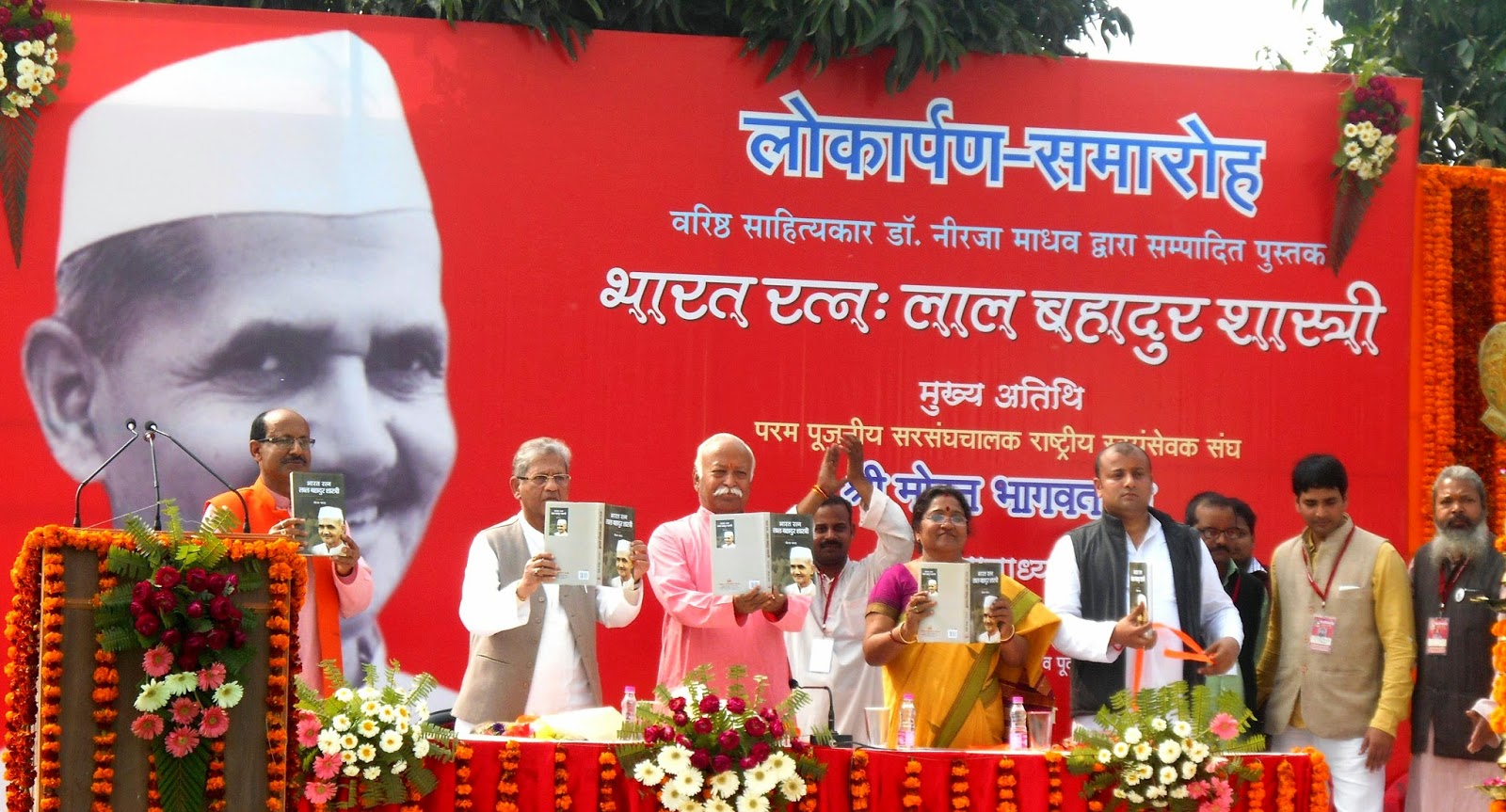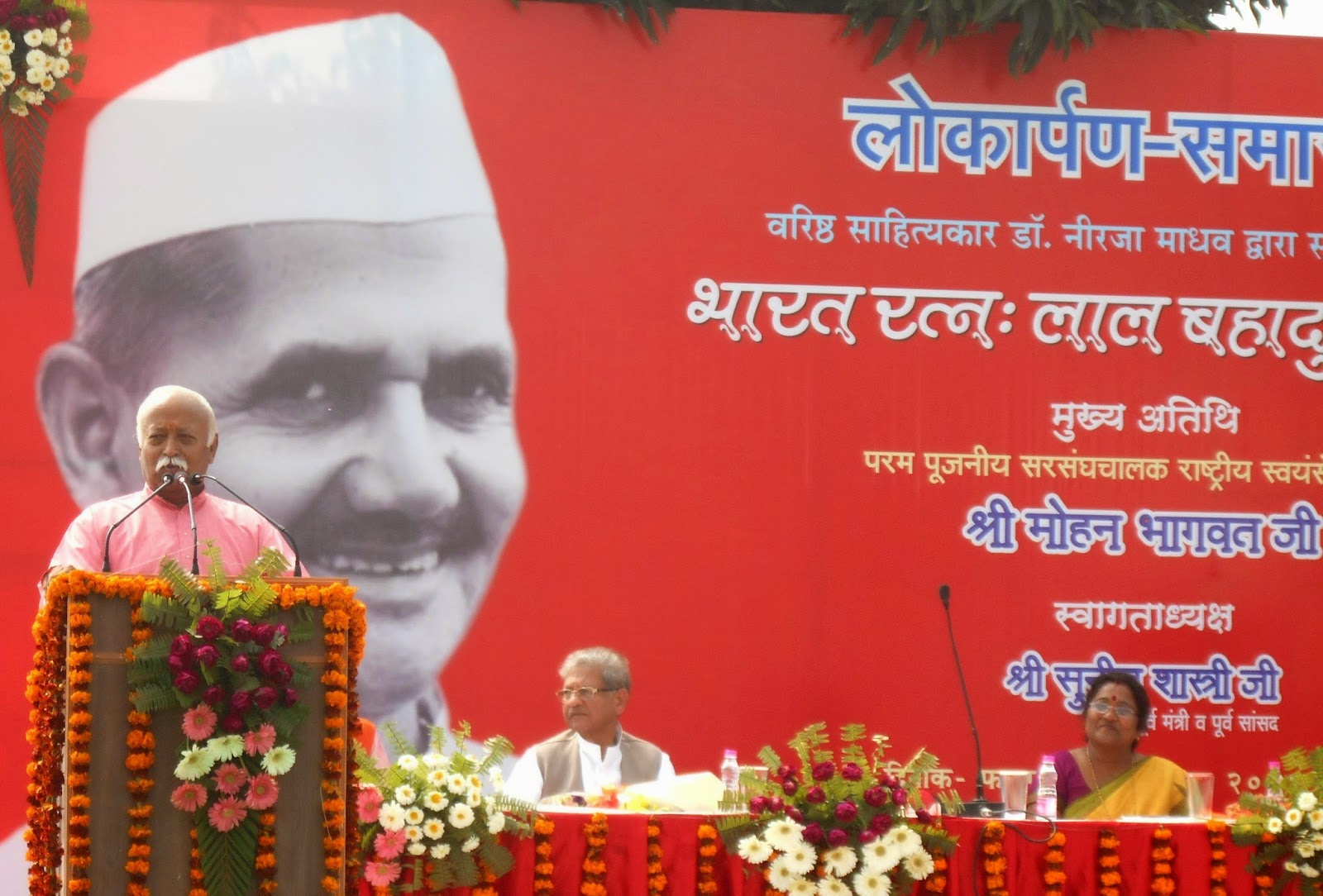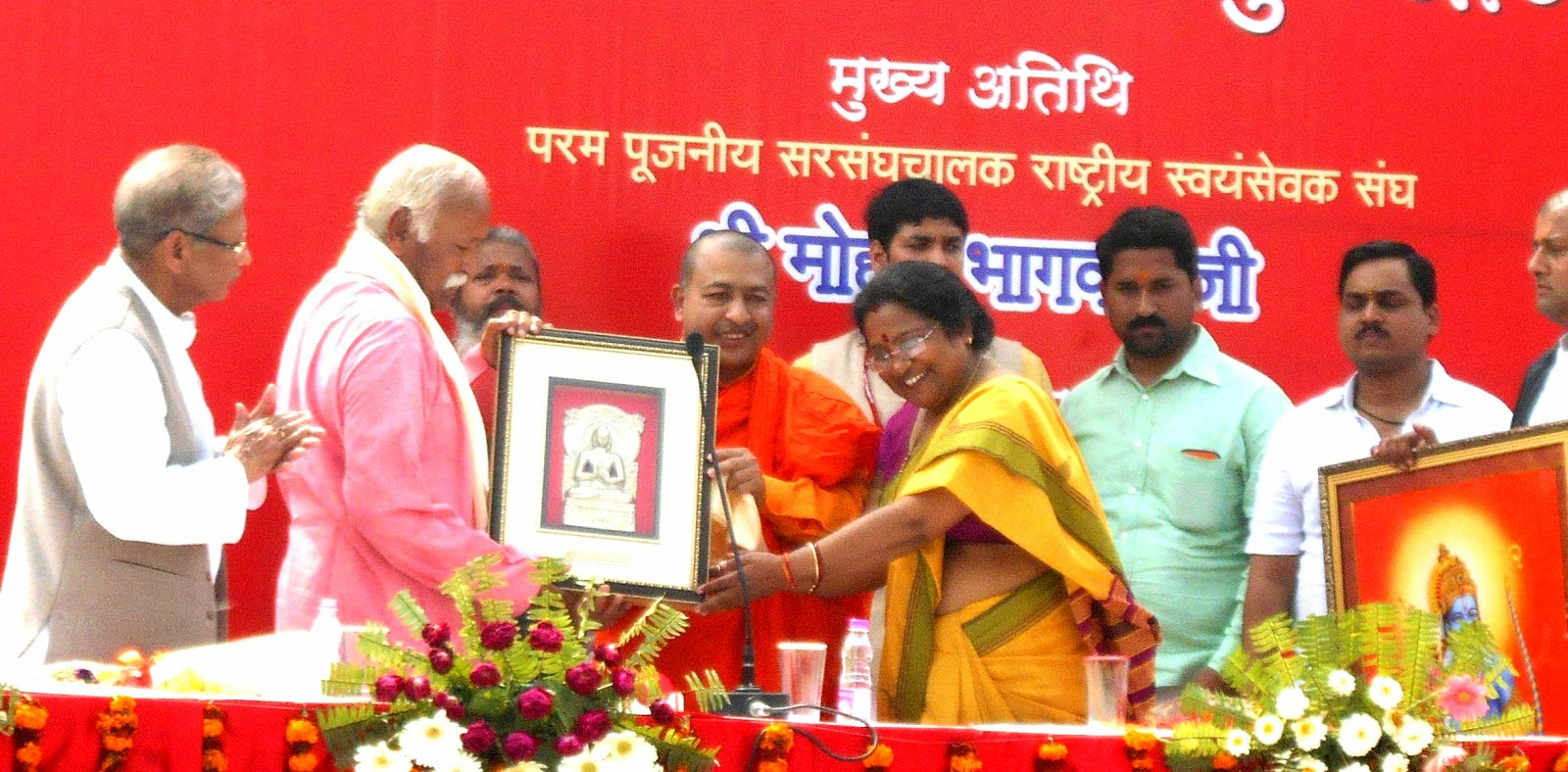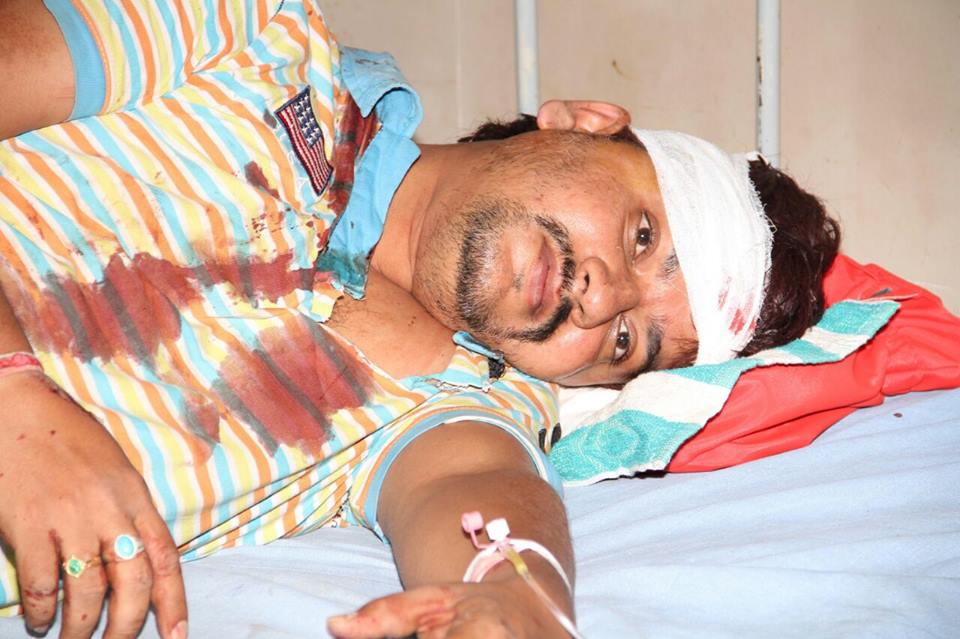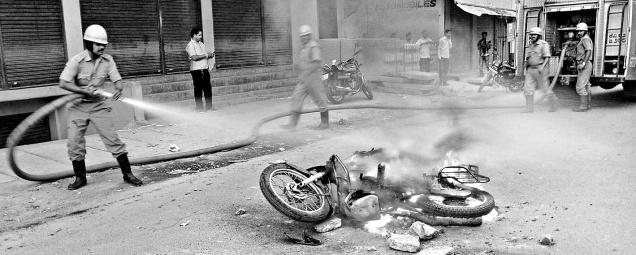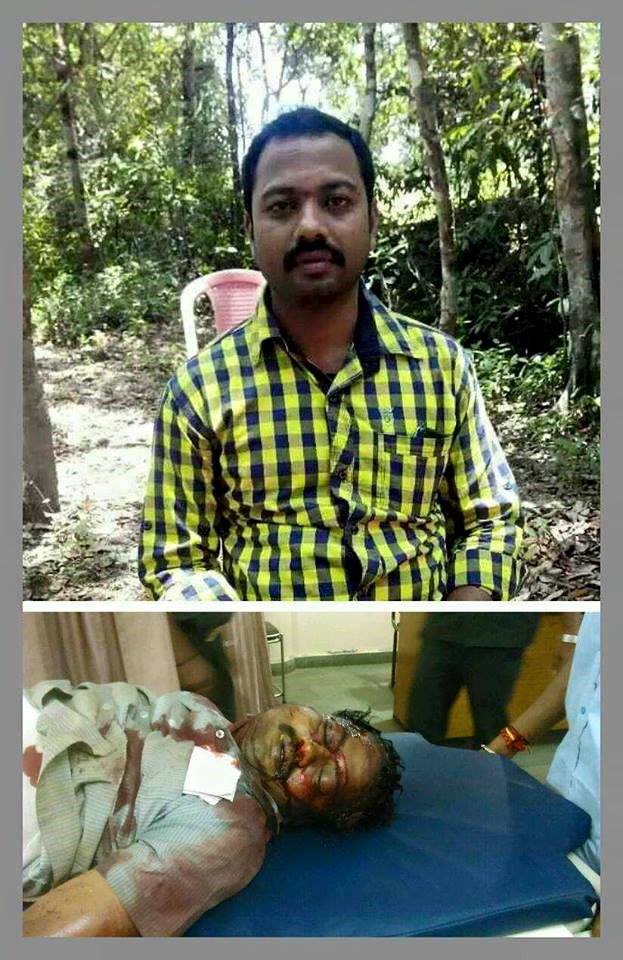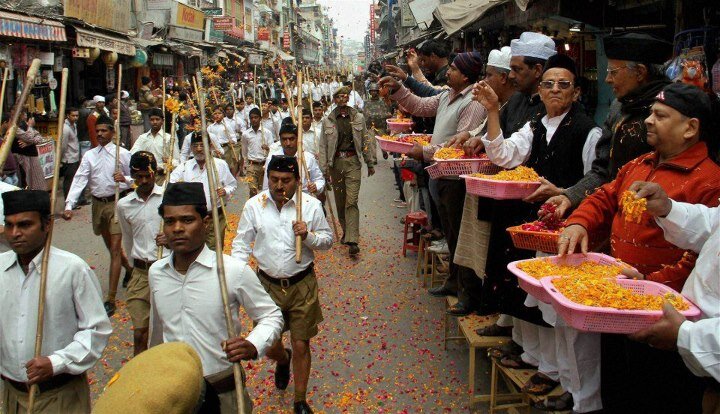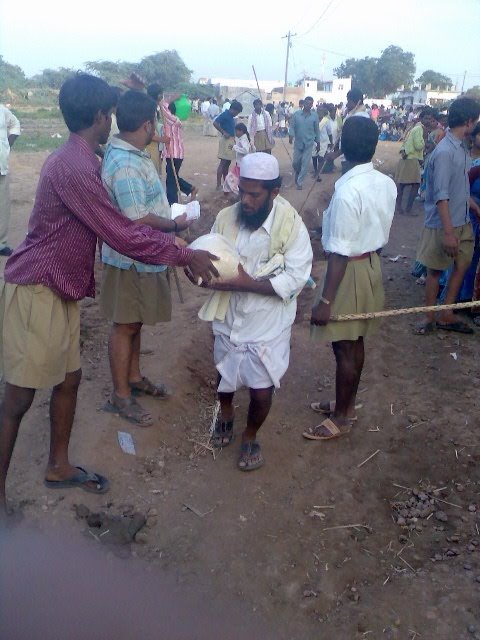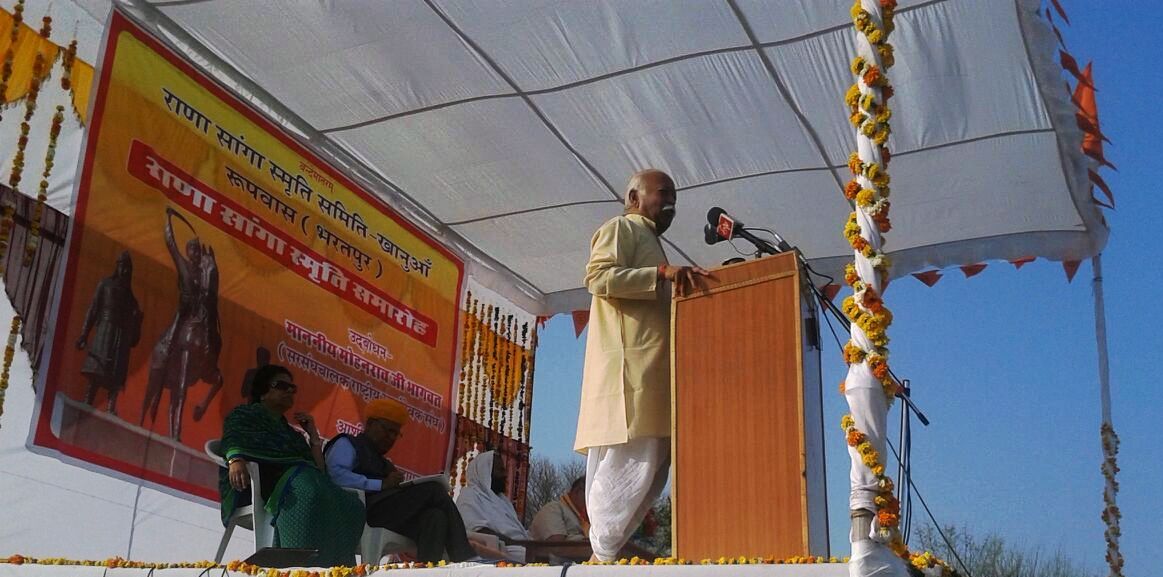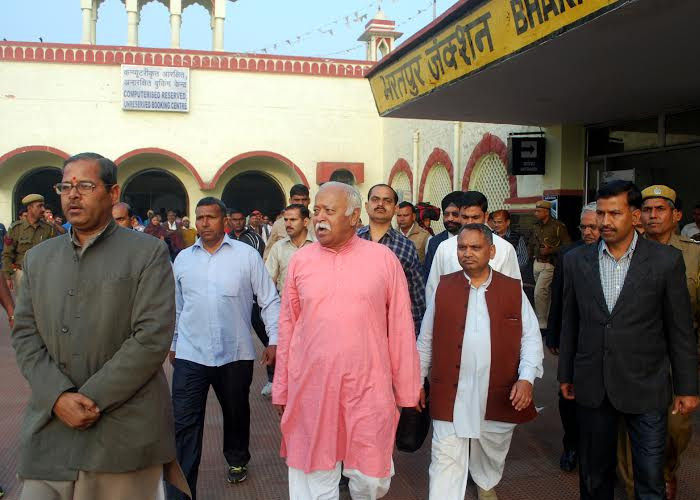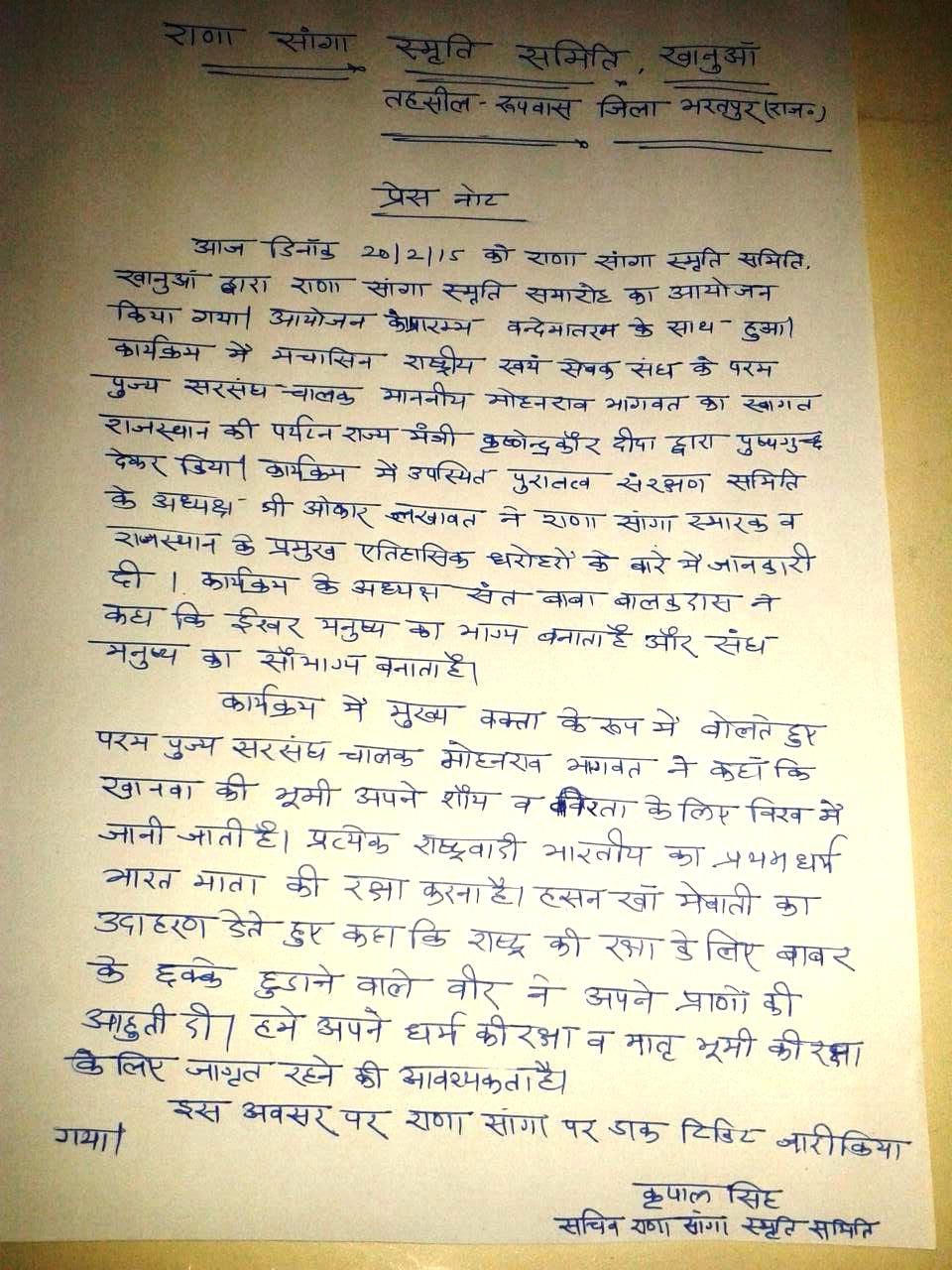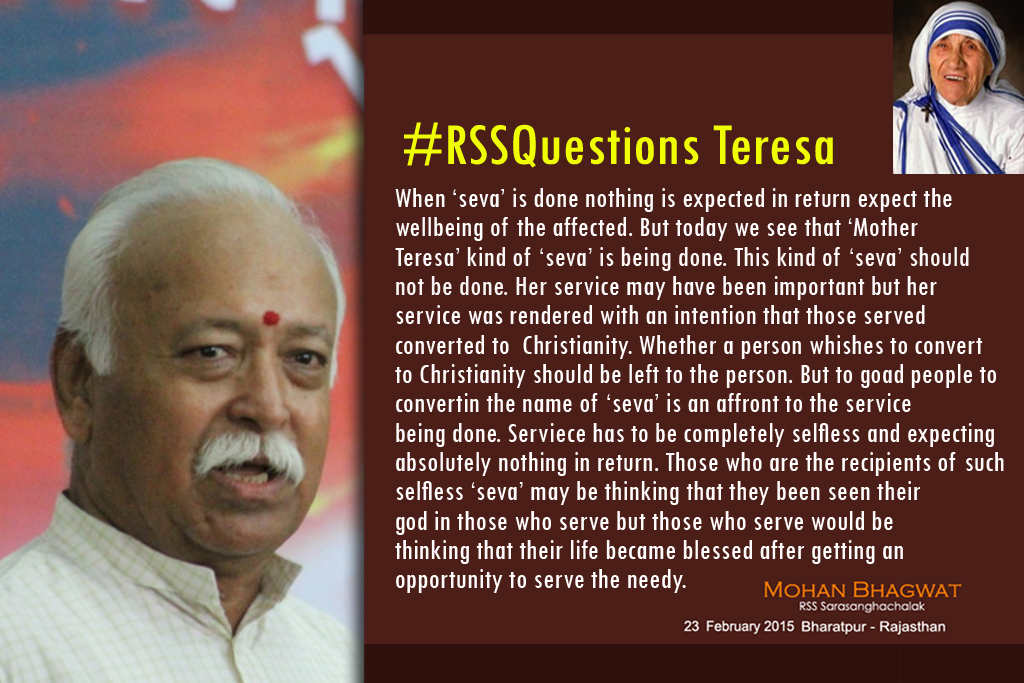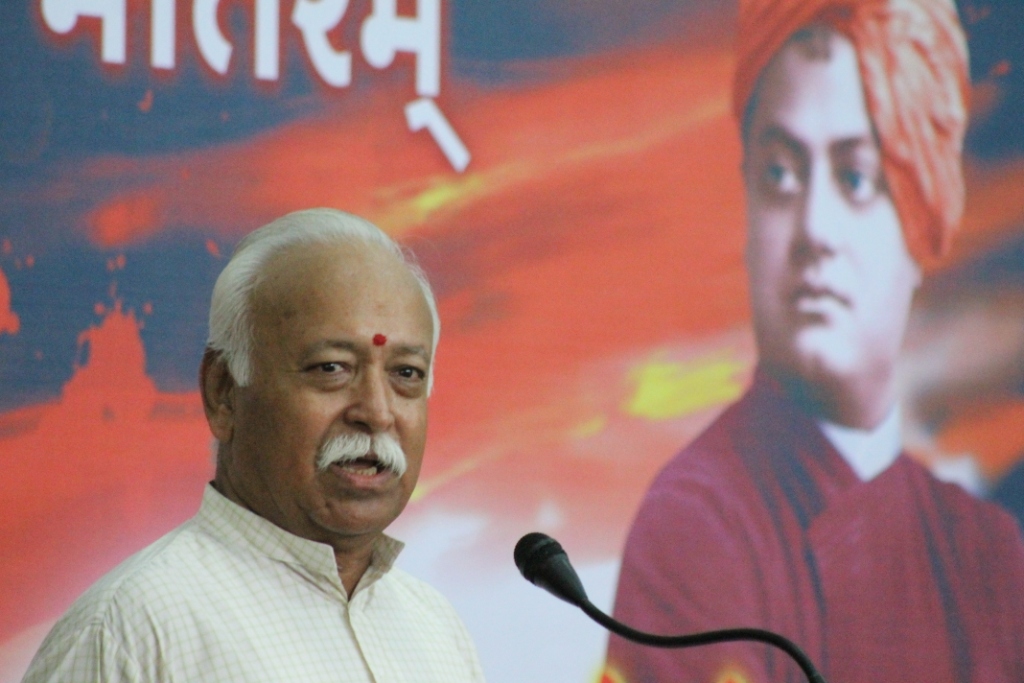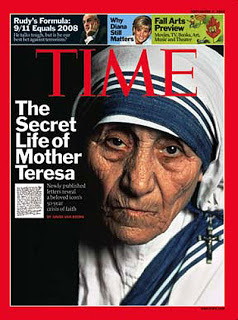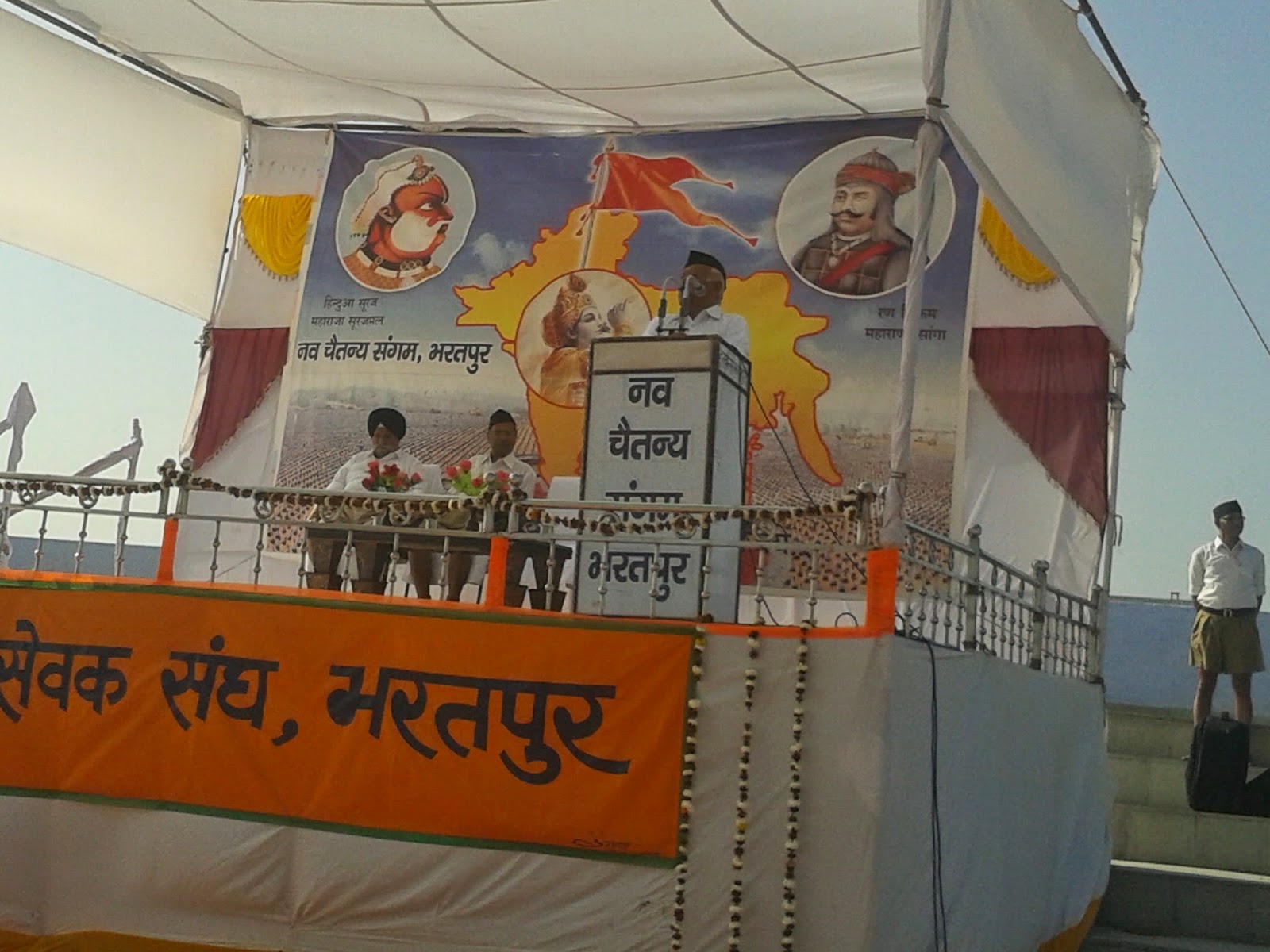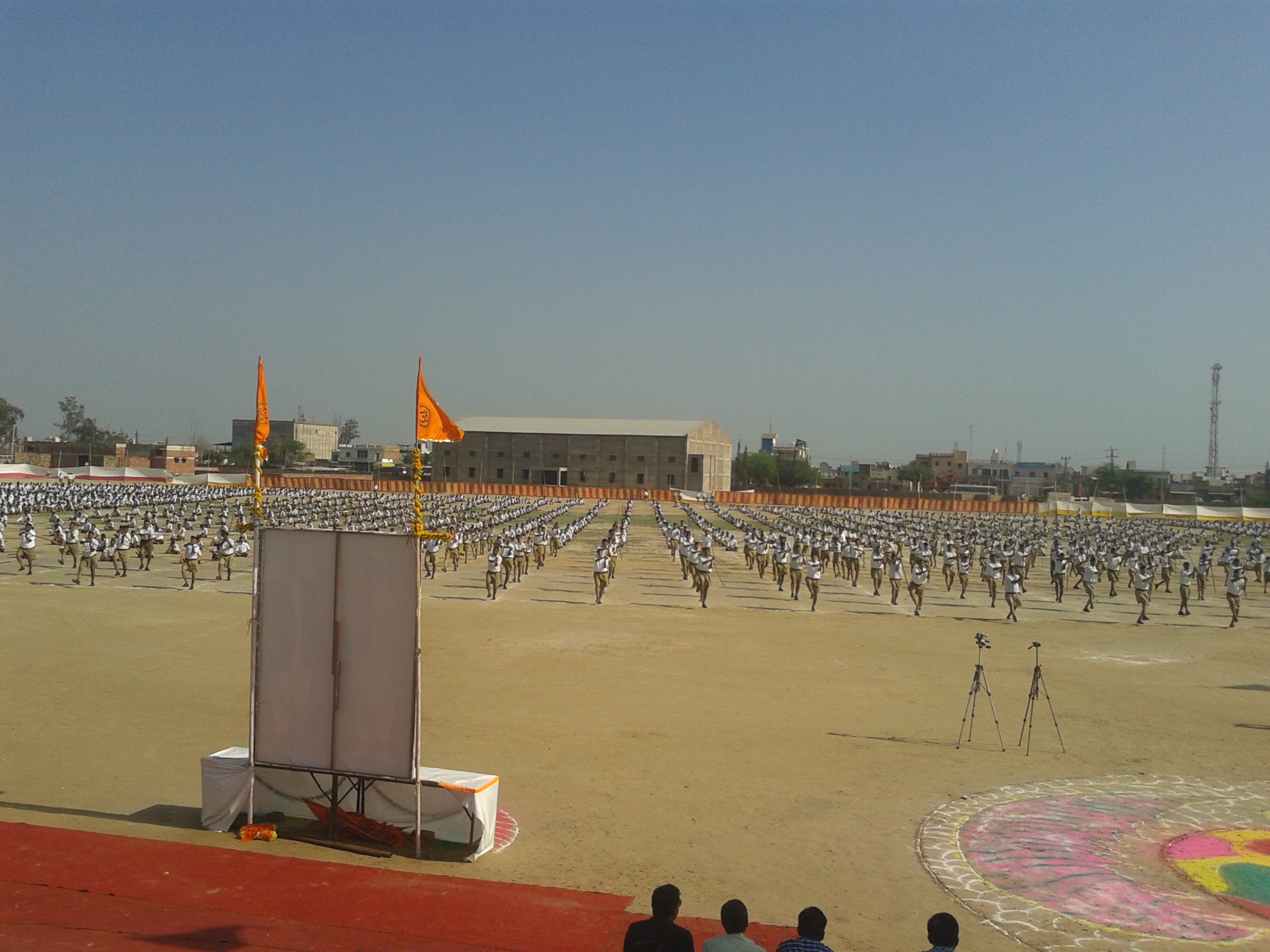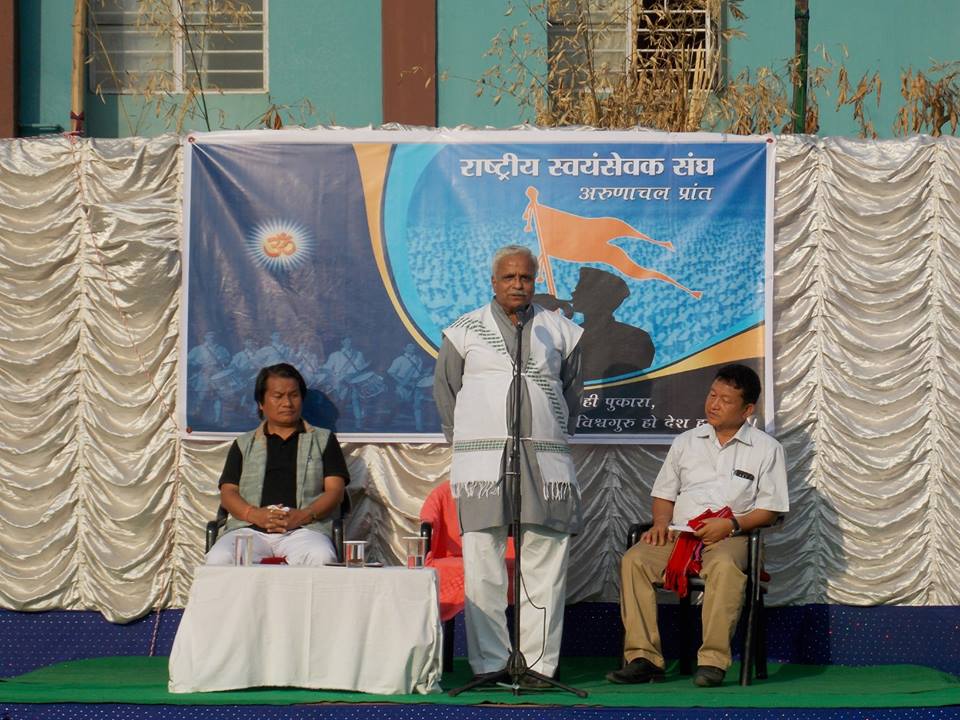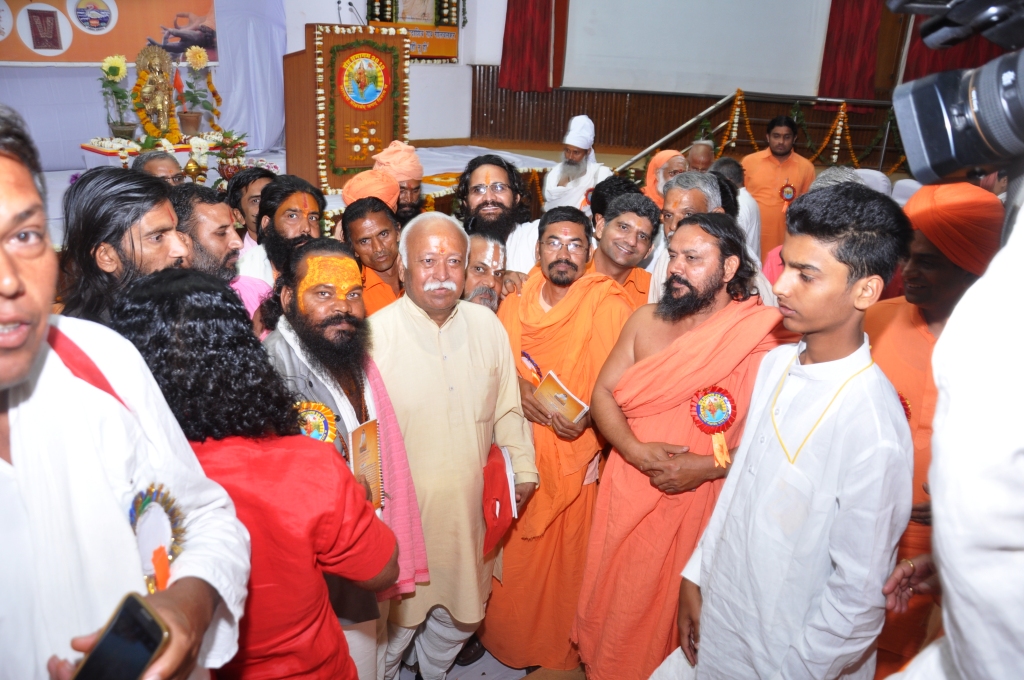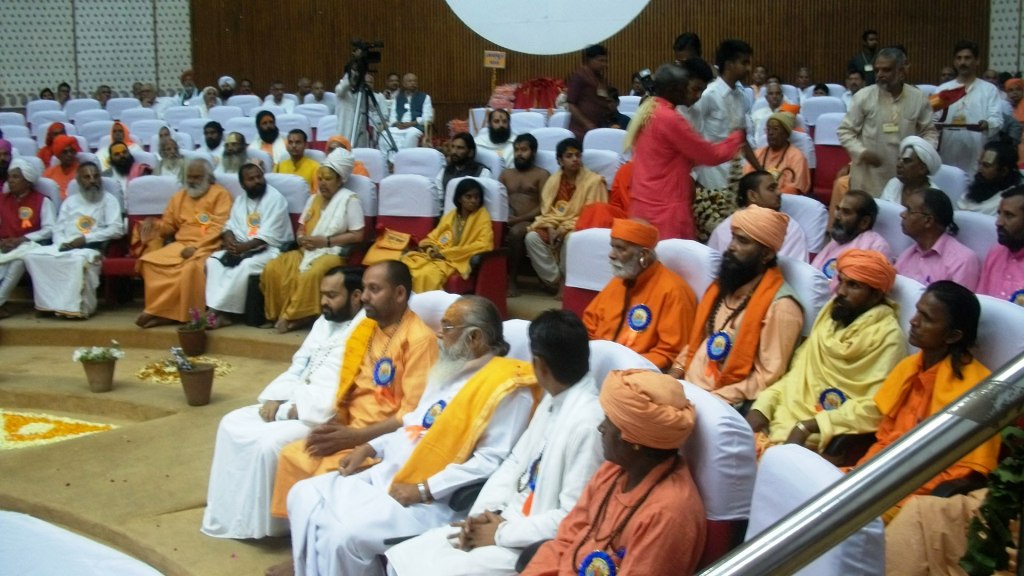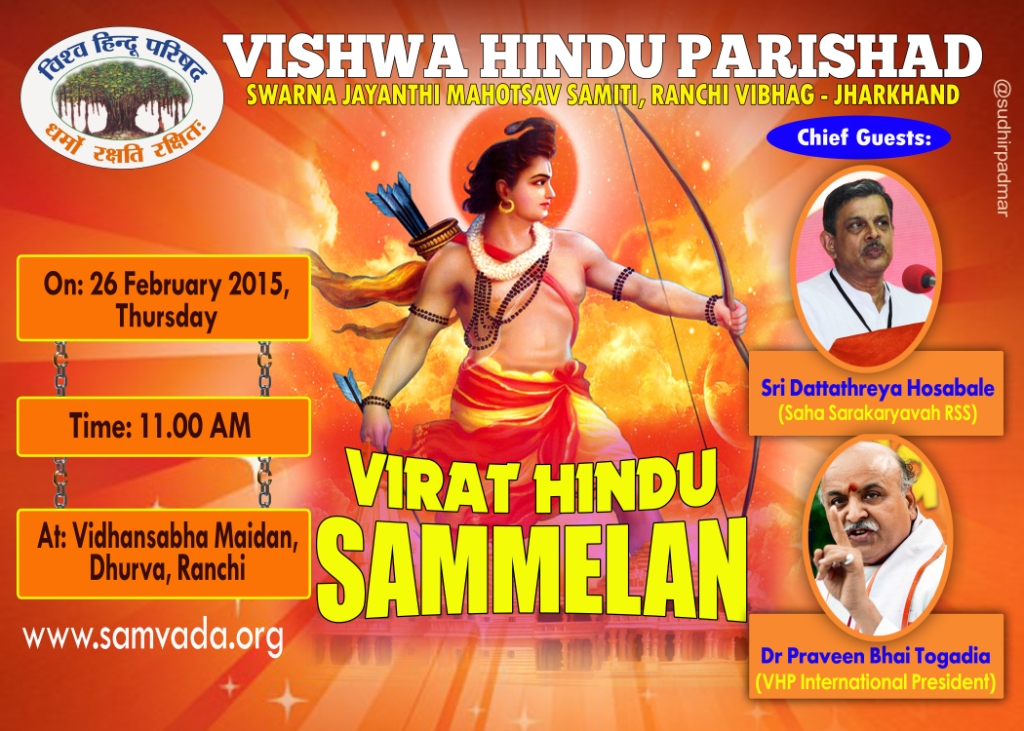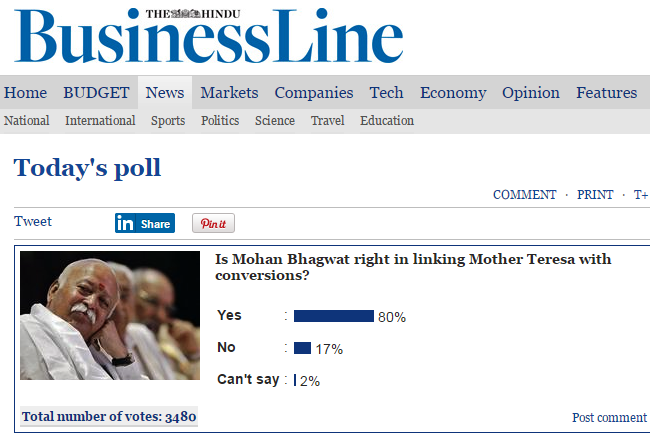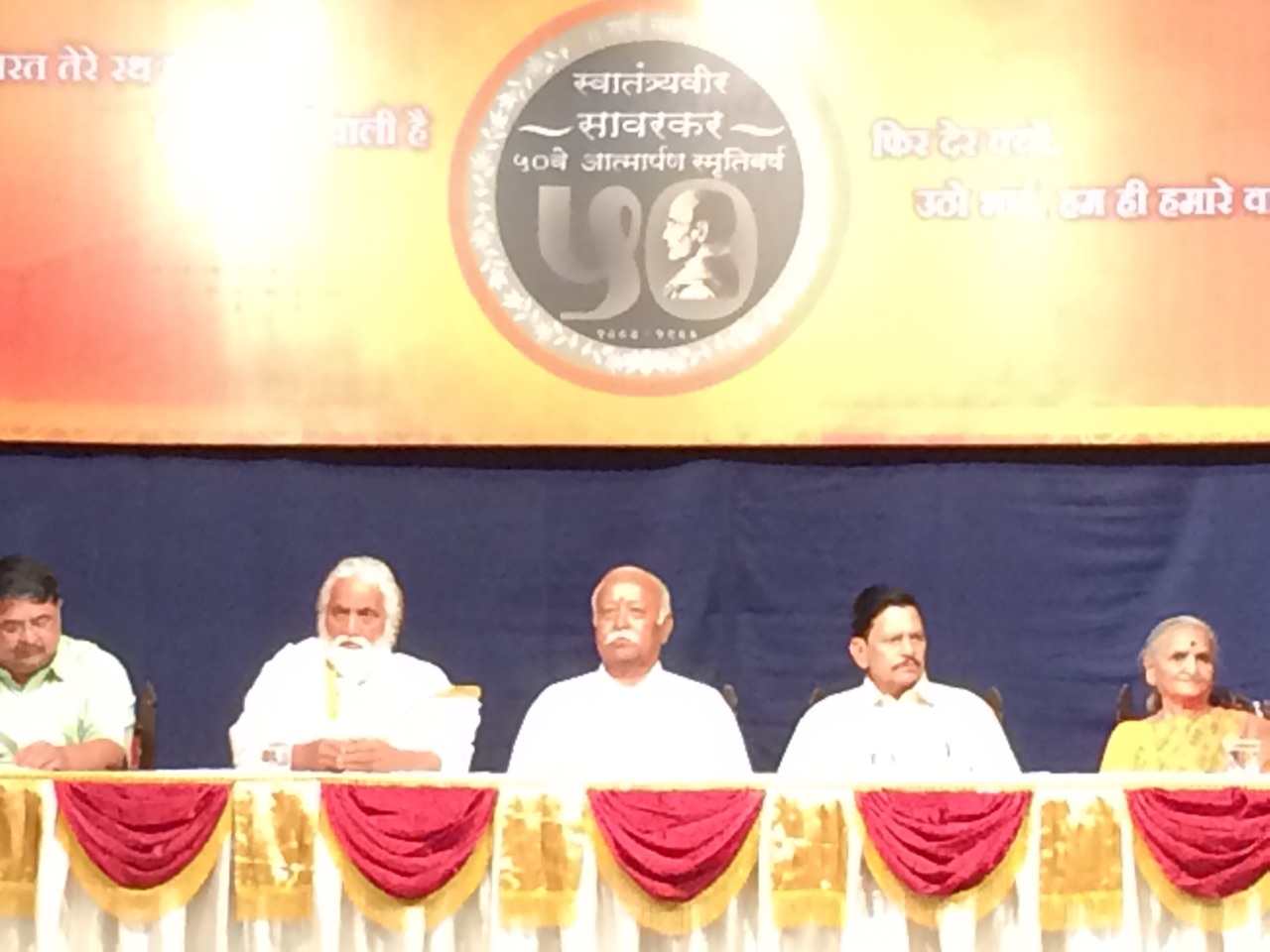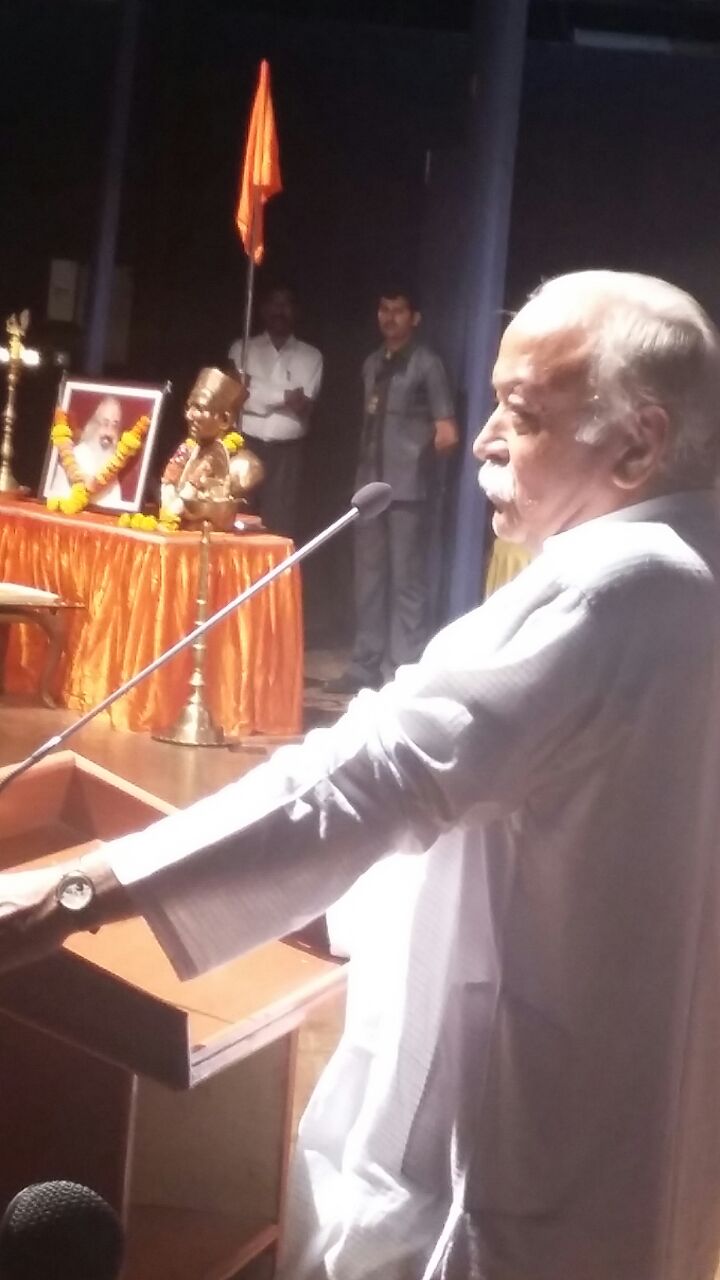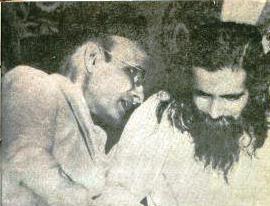Nation remembers Madhav Sadashiv Golwalkar , popularly known as ‘Guruji’ , on his 109th Jayanti, today (Magha Bahula Ekadashi). Born on 19 February 1906, at Ramtek of Nagpur, after his M.Sc and LLB studies, became a professor for a Short period of time. Later, Guruji entered RSS. Handpicked by RSS founder Dr KB Hedgewar, Guruji became the second Sarasanghchalak of the Rashtriya Swayamsevak Sangh in 1940, served the post his death in 1973. Golwalkar recognized as one of the greatest social reformer of post-Independent India.
Who was Shri Guruji? What were his special qualities? Was he the head of any organization? Did he do something great for the nation? All these and many more questions flash across one’s mind as soon as one hears the name of Shri Guruji.
Let us look at the brief answers to these questions. Shri Guruji was the second all-Bharat Chief of the Rashtriya Swayamsevak Sangh. He was born in 1906. The special occasion round the corner is the celebration of his birth centenary. ‘Guruji’ was not his original name. This name was used out of regard, by his students in Banaras Hindu University where he taught. He is better known by this name even today throughout the Sangh and the nation. His name was Madhav Sadashivrao Golwalkar. His father’s name was Sadashivrao and his mother was Lakshmibai. They lived in Nagpur. In his childhood, Shri Guruji was called lovingly as Madhu. Eight progenies of his parents before him had met a premature death. Those days, Nagpur was a province of modern Madhya Pradesh. His father was a teacher. He was continuously posted in Hindi speaking areas. Although, his mother tongue was Marathi, since Hindi was the general spoken language, Madhu had a firm grip on Hindi as well. And as his school was managed by the Christian missionaries, Madhavrao (his name in school) developed mastery in English, too.
The atmosphere in Madhavrao’s house was pious and religious. Right from his childhood, his mother would wake him up with devotional songs, rendered in her melodious voice. This left a deep cultural imprint on him. He would cherish her songs very fondly, when he grew older.
Prodigious Intellectual Talent
Madhavrao was a sharp boy with prodigious memory. Once, his school teacher Prof. Gardener was teaching the Bible. Madhavrao interrupted saying, “Sir, the reference given by you is not correct, actually it should have been like this….” And saying thus he uttered another sentence. All the students and Prof. Gardener were amazed. But when it was cross-checked with the Bible, he was found to be correct. At the end of the class, the Professor gave him a fond pat on the back. This incident served as a witness to his qualities, like exceptional memory, courage and unshakeble self-confidence. His memory served him till his last day. Even today, throughout the country, people recall anecdotes of his phenomenal memory.
Extraordinary Forbearance
In 1924, having completed his studies up to Intermediate, Madhavrao left for the famous Banaras Hindu University, to finish his B.Sc. The huge repository of invaluable books in the library there was as if waiting to quench his thirst for knowledge. Madhavrao started reading the books, through and through, one by one. One day, his toe was bitten by a scorpion, but he very casually cut that portion of his foot, dipped that foot in potassium permanganate solution and resumed his study. Amazed at this, one of his friends asked, “How do you manage to study despite such severe pain?” Madhavrao replied, “Well, the scorpion has bitten my foot, not my head!” Later on also, people have many a time witnessed his tranquil tolerance under most excruciating physical pains.
Disciplinarian
Madhavrao returned to Nagpur after completing his Masters in Zoology with first class from Kashi and a few months later, left for Chennai for research in aquarium. There also, people experienced his passion for strict discipline. Once, the Nizam of Hyderabad paid a visit to the laboratory. All the visitors were charged with entrance fee. The managers, however, thought it inappropriate to ask for entrance fee from a big shot like the Nizam. But Madhavrao insisted and the Nizam could enter only after paying the entrance fee. In 1929, his father retired from service and this led to a financial crunch. Money could no longer be sent for pursuance of Madhavrao’s studies and ultimately, he left research work and returned to Nagpur. In his correspondence of those days, to his friends, Madhavrao expressed his sentiments as to how he felt in consonance about the incidents of the aggressive patriotism of revolutionaries.
Boundless Love for Students
From August 1931, Madhavrao began teaching at Banaras Hindu University. During this period, many of his hidden talents came to light. His unfathomable love for his students drove him to help them at studies in every possible way; often he would purchase the necessary text-books for needy students or financially assist them to pay their examination fees. He would be happy spending a large sum of his salary to this end. He would delve deep into other subjects also, so that he could help students in those subjects. Doing all this, Madhavarao had no expectation in return at all. Pandit Madan Mohan Malaviya noticed his talent as well as his deep affection for the students, and grew fond of him. It was through a Swayamsevak from Nagpur, Shri Bhaiyyaji Dani, who was sent there as a student by Doctorji, (Dr. Hedgewar, the founder of RSS) that Shri Guruji came into contact with the Sangh. He also became the Palak (guardian) of that Shakha.
In February 1933, on the expiry of his teaching term, Shri Guruji returned to Nagpur and by 1935, completed his study of law.
What If The Family Tree does Not Branch Out Further?
Meanwhile, having seen Shri Guruji from closer quarters, Doctorji tried to maintain contact with him. Recognizing his extraordinary working capacity and intellectual talents, he started delegating greater responsibilities to him. In 1934, Shri Guruji ably discharged the duties of Sarvadhikari (officer-in-charge) of Sangh Shiksha Varga (Officer’s training camp) in Akola. By now, it was very natural for his parents to think of his marriage. Shri Guruji’s mother put forth the proposal for his marriage and said if he decided against marrying, their Golwalkar family lineage would cease to exist – he being the only surviving son. Shri Guruji replied, “In the present situation it is necessary, that, for the welfare of the society, if the family lineages of not only me, but several others like me are terminated, I am not in the least worried.” The debate over his marriage ended then and there.
In Search of his Life Mission
Shri Guruji was seriously thinking of orienting his life in a definite direction. The pathetic plight of the Hindu society and of an enslaved nation tortured him on the one side; on the other, it was his inborn spiritual pursuit that pulled him. He started visiting the President of Sri Ramakrishna Ashram, Swami Bhaskareshvarananda in Nagpur. There he came in close and friendly contact with Sri Amitabh Maharaj. He came to know through him that in the Sargachi Ashram, in Bengal, there stayed Swami Akhandananda, a direct disciple of revered Sri Ramakrishna Paramahansa. In 1936, one fine day, based on the information received from Amitabh Maharaj, Shri Guruji quietly left for Sargachi in search of a spiritual guide. Neither his parents nor anybody else knew his whereabouts. When Shri Guruji left for Sargachi, Doctorji who was thinking about entrusting him with more and more responsibilities became equally concerned for him.
Unique Personification of Service
Sargachi witnessed another brilliant aspect of Shri Guruji’s personality. He immersed himself in the service of Swami Akhandananda, who was quite old and indisposed. Shri Guruji would daily bathe him, wash his clothes, offer him tea and meals, and put him to bed. Often Shri Guruji would sit through the night at his bed-side and serve him. About six months passed in this manner. His untiring dedicated service and his spiritual orientation pleased Swamiji so much that he decided to initiate him into the Order. Shri Guruji was overwhelmed after getting initiated. Later, he described the moment thus, “I have received the blessings one gets after innumerable births. My body felt thrilled all over and I am finding myself an altogether changed person.” 13th January, 1937 (Makar Sankranti) was the auspicious day of initiation. A few days later, on 24th January, Guru Maharaj gave his blessing to Shri Guruji, saying, “Whatever good I have, I am giving it to you; and whatever bad you have, you give it to me.” That day, till 3.30 a.m. Swamiji disclosed the secrets of spirituality to Shri Guruji and Amitabh Maharaj. One day, Swamiji told Amitabh Maharaj, “It seems that Golwalkar would work in association with Dr. Hedgewar.” As a mark of his memory, Swamiji gave his personal belongings like Kamandal etc. to Shri Guruji. After a short while, in February, 1937 the revered Swamiji left his mortal coil. Later, Shri Guruji spent some time in Ramakrishna Ashram, Belur Math and then along with Amitabh Maharaj returned to Nagpur.
In Nagpur, Shri Guruji’s, life took an altogether new turn. In Doctorji, he saw a personality intensely motivated and dedicated to the nation. On being asked by some gentleman on the subject, Shri Guruji replied, “Like spirituality, organization of the Nation has also been my inclination from early days. I believe that I would be in a better position to achieve it successfully being a part of the Sangh. Hence, I have dedicated myself to the activities of Sangh. In the light of the insight and practical approach of Swami Vivekananda, I think my decision is appropriate.”
Shri Guruji was also closely observing Doctorji, who had put his heart and soul into this work. From 1938 onwards, Shri Guruji identified the work of Sangh as the sole mission of his life. In the close company of Doctorji, he focussed his entire attention on the activities of Sangh. This also relieved Doctorji of his worries.
Dr. Hedgewar-A Born Patriot
It would be relevant here to know the personality of Doctorji briefly. His full name was Dr. Keshav Baliram Hedgewar. Right from his childhood, as a student he emitted sparks of patriotism. The nation was resonant with the chant of ‘Vande Mataram’, and young Keshav also joined the movement. Later, he went to Kolkata to obtain his medical degree. Kolkata was the hub of revolutionary activities in those days. During his four years of study of medicine, Doctorji very keenly studied the working style of revolutionaries, their contributions to the freedom struggle and also actively engaged himself in such activities. Once, while speaking about Doctorji, Sri Trailokyanath Chakravarti, prince of revolutionaries, said, “Even in Kolkata of those days, young Keshavrao would say that it would not be possible for a mere handful of motivated youth prepared to embrace martyrdom to make the nation free from the strong shackles of foreign rule. For that, the spark of freedom needs to be ignited in the minds of each and every person in the society”.
Founding of the Sangh
Having obtained his medical degree from Kolkata, Doctorji returned to Nagpur. He joined the movements which were going on under the leadership firstly of Lokmanya Tilak and later of Mahatma Gandhi and went to jail also. All this time, his mind was deeply engrossed in contemplation about how the nation could be delivered for all time from its external as well as internal dangers. Gradually, he arrived at this conclusion that the Hindu society, the backbone of our country, should be organized to attain this goal. For the fulfillment of this objective, on the auspicious occasion of Vijayadashami in 1925 he established the Rashtriya Swayamsevak Sangh (RSS) and freeing himself from all the other activities, he engaged himself completely in the work of the Sangh. Although, he came from a poor family, Doctorji did not opt for the medical profession and renouncing family life, he devoted himself totally towards the expansion of the Sangh.
It was due to the superhuman efforts of Doctorji that in a span of just eight to ten years, the activities of the Sangh spread throughout Bharat. But his health too started fast deteriorating. As a result, the future of the Sangh after him deeply occupied his mind. It was but natural that he chose Shri Guruji as his successor.
Test of Shri Guruji’s Mettle and His Appointment
In 1939, in a small village named Sindi near Nagpur, Doctorji discussed the outline of the approach of the Sangh, progress of its activities, the Sangh prayer, commands to be used in day-to-day shakha etc. This meeting was attended by senior Sangh workers and lasted for eight days. At the end of the discussion, on each issue, Doctorji’s decision was naturally accepted by all. Shri Guruji also would make his own point on every issue, logically and forcefully. But if at the end Doctorji decided against his opinion, he would gladly accept it. Everybody noticed his total surrender to Doctorji and mental control that Shri Guruji displayed and they all felt that Shri Guruji was the most suitable successor to Doctorji. In 1939, Shri Guruji was appointed as the Sarkaryavah (General Secretary) of the Sangh.
Around this time, Doctorji had a serious attack of fever, which could not be controlled by any means. He was in a place called Devlali near Nasik. The doctors treating him began giving up their hopes. Shri Guruji attended upon him in this dire circumstance and would stay awake through the night, administering medicine, water and other help needed. Luckily, after a few days Doctorji’s health started improving. On his return from Devlali, a few months later, Doctorji again took seriously ill and was taken to Nagpur. In 1940, he could address the third year trainees in Nagpur for just a few minutes with great difficulty. Those words have remained as an eternal source of inspiration for Swayamsevaks – “Today, I see a miniature of a Hindu nation in front of me. I only have to say to you that you consider the activities of the Sangh as the main objective of your lives. We should never be unfortunate enough to say that I used to be a Swayamsevak.”
Doctorji’s fever kept on rising and doctors having lost all hopes finally decided to go for lumbar-puncture. This was enough for Doctorji to surmise that he was about to breathe his last. He called Shri Guruji by his side and in front of the Swayamsevaks present, said, “You should look after the work of the Sangh when I am gone.” Later, following the lumbar-puncture, Doctorji left his worn out body on 21st June 1940 to reach his heavenly abode.
As the Chief of the Sangh
Shri Guruji was rather new in the Sangh as compared to other associates. He was also not very well known in the country. This obviously raised doubts in the minds of quite a few well-wishers and others regarding the future of the Sangh. Many of them started commenting and advising too. But Shri Guruji silenced everybody in his very first preliminary speech as the Sarsanghachalak, “Doctorji was a synthesis of an affectionate mother, a responsible father and an able Guru. He has entrusted me with this tough job of Sarsanghachalak, but then this is the throne of Vikramaditya (a king of ancient Bharat known for his benevolence and justice); even if a shepherd boy would sit on it, he would but dispense justice….. The meritorious deeds of our great leader would ensure that I will always do the rightful things.” In another speech, he said, “Our organization is like an impregnable fort; those who would attack it would only receive its brunt.” Shri Guruji’s self-confident utterances boosted the morale of the Swayamsevaks and silenced his critics.
Thus, Shri Guruji made the work of the Sangh the sole purpose of his life. A most important aspect lay in his concentrated efforts to orient his daily routine, life-style and nature as per needs of the Sangh. He also gradually tried to overcome his weaknesses. The aggressiveness in his tone due to his strict disciplinary nature also started to soften. He was always alert about all these aspects. Shri Guruji had totally imbibed the ideal of Hindu nationhood. For him, Doctorji served as a living example in all such respects.
‘Quit India’: Right Perspective of Shri Guruji
His testing-time began within a few years after he assumed the charge of Sarsanghachalak, when serious issues cropped up one after the other. Throughout the country, there were violent attacks on the Hindus by Muslims. Directly or indirectly, the Muslims had the backing of the British government. Although the British forces were losing all the fronts in the World War II, unfortunately, there was no country-wide powerful organization to reap the benefit from it. On 9th August 1942, the Congress, without having this required strength announced the Quit Bharat Movement. The movement started with a big bang in the country. But the disorganized and disoriented followers and people took to destructive activities. The British government cracked down very heavily on the movement and within a couple of months, the movement fizzled out. All the leaders of the Congress were imprisoned and there was no hope of their release. There was despair and disorientation all across the country. The Muslim League tried to en-cash this opportunity and sharpened its attacks on the Hindus.
The onset of Quit Bharat Movement posed a question to the Sangh as to whether or not it should participate in it. Taking into consideration all the dimensions of the matter, Shri Guruji concluded that instead of involving the entire Sangh, it would be better to encourage the Swayamsevaks on an individual basis.
His decision was in accordance with the policy of Doctorji, and the Sangh focussed its attention towards the expeditious building up a unified Hindu society at the earliest. With this background, Shri Guruji travelled all over the country and appealed to the Hindus to be prepared for self-defence. Even as the situation worsened, Shri Guruji gave an impassioned call to the Swayamsevaks, “it is our good fortune that we are born in this era of national crisis. It gives us an opportunity to show our true responsibilities, spirit of sacrifice and bravery many times more than in the times when the life of the nation is prosperous and happy.”
Mohammad Ali Jinnah, under the Muslim League’s plan of dividing the country, declared 16th August, 1946 as the day of Direct Action. This resulted in merciless massacre of the Hindus especially in Kolkata. But within a couple of days, the Hindus retaliated and gave befitting reply to Muslims. The Muslim aggression was punctured. Those days Shri Guruji constantly appealed to the Hindu people to stand up against the partition. But the Congress leadership had already lost the will to fight for an undivided Bharat. They had been mentally defeated. Pandit Nehru had also confessed to it very clearly. In those times, there was no source of protection for the Hindus except the Swayamsevaks.
1947: Leadership Par Excellence in That Terrible Crisis
Ultimately, the Congress leadership gave in to partition; and accordingly, the same was announced on 3rd July, 1947. All of a sudden, the scenario in the country changed drastically. The Swayamsevaks were instructed to oversee and ensure the safe retrieval of the Hindus from the areas which were to emerge as Pakistan. They were to stay steadfast and not to leave until the last Hindu was thus rescued. Those terrible days posed many a moving and blood-soaked incident for the Swayamsevaks. Their incomparable battle strategies, valour, courage and sacrifice are worth recording in the history of Bharat in golden letters.
The example set forth by Shri Guruji in those days was also extremely inspiring. In those times, he continued to tour those tense areas. In August 1947, when he entered Punjab, after his one week’s stay at Sindh, there was terror and tension in the air. In spite of this, he reached out to the people in different places and boosted the morale of the anxious Hindu brethren, even putting his own life at stake.
He visited all the districts from Amritsar to Ambala. During this period, he would travel on damaged railway tracks, on goods trains or sometimes in the train engine. There was a bridge at Chahedu on way, and it seemed impossible to proceed any further, as the railway-track was hanging down from the bridge and below the bridge, flood-waters were gushing in tremendous speed. The Swayamsevaks were clueless as to how to proceed further, but when Shri Guruji reached there he unhesitatingly briskly walked over the broken track and crossed the bridge in no time. The rest of the Swayamsevaks also gathered courage and followed him. People were wonder-struck to receive them at the other end (Ludhiana).
The Swayamsevaks also accomplished another tough task in that nerve-raking situation of partition. They had to arrange for the food and shelter for lakhs of brothers and sisters migrating from Pakistan. Unparalleled forbearance, sympathy and sensitivity were the high-points of the service rendered by the Sangh in those days. Shri Guruji did not accept the partition as the ultimate truth. He nursed the dream of restoration of the divided idol of the Motherland to a unified one. He fervently hoped that every patriot would always nurture the same dream.
An Appeal for Harmony
The popularity of the Sangh grew by leaps and bounds due to the addresses and visits of Shri Guruji throughout the country. But after a few months the Sangh was put to trial by fire once again. There was a lot of unrest and anger amongst the swayamsevaks and the masses with regard to those who agreed to the partition. Shri Guruji appealed to the masses saying, “People with difference of opinion are also part and parcel of our society. They, surely, have done some good deeds and have sacrificed for the cause of the society and the nation. Hence, we should be compassionate and affectionate so as to consider them as our own brethren.” The entire organization and the Swayamsevaks drank the nectar of his appeal of brotherhood and tried to follow his example. On 14th of January 1948, in Mumbai, he gave the same message of harmony to a congregation of lakhs of people. However, the leaders of the Congress began fearing the ever-growing popularity of the Sangh. They apprehended that later on the Sangh would be a potent rival in the political arena. They started oppressing the Sangh on every front. The government banned the camp of one lakh Swayamsevaks in Maharashtra. They had already, in a secret meeting of the Central Committee in October 1947, taken the decision to impose a ban on Sangh on some pretext.
The Assassination of Gandhi: A Pretext for Ban
30th January, 1948 proved to be a black day for Bharat. At five in the evening, revered Gandhiji was assassinated. Immediately, Shri Guruji cancelled all his tour engagements and rushed to Nagpur and sent wires to Pt. Jawaharlal Nehru and Sardar Patel. In his message of condolence he expressed his reverence to Mahatma Gandhi’s unique personality stating that Gandhiji was – “a deft helmsman, who held together people of different natures in a single strong movement, bringing them to the right path….” He also condemned his assassination in no uncertain terms. On the night of 1st of February 1948, Shri Guruji was arrested and put in Shivani jail near Nagpur and on the 4th of February a ban was imposed on the Sangh. Shri Guruji immediately dissolved the Sangh and wrote letters to Pt. Nehru and Sardar Patel demanding that the ban on the Sangh be lifted.
The government order accused the Sangh of a number of serious crimes, apart from the assassination of Gandhiji. Thousands of Swayamsevaks were jailed throughout the country and their houses and the offices of the Sangh were looted and ransacked by the Congressmen, the Socialists and the Communists. The government machinery incessantly spewed venom against the Sangh. As Godse, the assassin of Gandhiji was a Brahmin, the Brahmins of Maharashtra and neighboring areas were targeted and arson and looting followed. In northern Karnataka, in a village named Terdaal nine people were burnt alive in one such incident. A violent mob also attacked the house of Shri Guruji. Although, the Swayamsevaks could very well have taught a lesson or two to the mob, but in order to maintain harmony throughout the country in such testing times, the Sangh appealed to all the Swayamsevaks to “be calm, at all costs.” Shri Guruji also issued a detailed statement, directing how things were to be taken in a composed, rational and sublime spirit. He also asked the alert and armed (with lathis) Swayamsevaks outside his office, who had come to disperse the attacking mob, to go back peacefully and retired for his evening prayers. He told the Swayamsevaks nearby, “the service of the society has been my life-motto and I would never allow myself to be the cause of shedding of a single drop of its blood.”
Successful in Testing Times
From his prison cell, Shri Guruji repeated his demand to Pt. Nehru and Sardar Patel for lifting the ban on the Sangh. But these leaders were unmoved and every time they indulged in new allegations in response. Meanwhile, Shri Guruji was set free and he went to Delhi for negotiations but he was again imprisoned and sent to the Betul jail in the Central Provinces. His health deteriorated here because of bad food and hostile living conditions. During his stay in Delhi, Shri Guruji had sent a detailed statement to the press. In the statement, he gave a befitting reply to the accusations made by the government. He reiterated his demand for truth and justice and challenged the government to ‘either prove the charges or lift the ban.’ The whole country was resonant with these words.
Satyagraha: A New Record
The government paid little heed to the loving and respectful pleas and remained deaf and blind. Shri. Guruji therefore gave a call to the Swayamsevaks to restart the Shakha with a view to establishing truth and justice in the national life. In his spirited appeal, he said, “This is a battle between the right and the wrong, justice and injustice, generosity and meanness and love and crookedness. Our victory is definite as God is always with the righteous and the victory is on His side. So arise and trumpet the victory call for the Motherland, from the bottom of your hearts to the frontiers of the skies and accomplish your task. Bharat Mata ki jai.”
This movement named Satyagraha began on December 9, 1948. In the beginning the leaders made fun of this as a child’s play. On the contrary, no movement initiated by the Congress had ever such a huge number of participants. 77,090 Swayamsevaks offered Satyagraha and were jailed in different prisons. Also, the people witnessed an unprecedented example of non-violence of the Swayamsevaks, as they remained incomparably calm in the face of barbaric atrocities by the police.
An Example Second to None
Some impartial and prominent persons who were watching all these happenings, approached Shri Guruji, and requested him to stop the movement so that the atmosphere becomes congenial for negotiations with the government. Shri Guruji consented and instructed the Swayamsevaks accordingly. Mr. T.R. Venkatram Shastri from Chennai, a famous legal expert of liberal outlook was amongst the mediators. When he felt that all the efforts of mediation were failing, he sent a detailed statement to the newspapers, which ended thus, “The ban is neither just nor wise or expedient” and hoped that the ban would be lifted.
Ultimately, the government realized that now it was no longer possible to hype the validity of an otherwise illegal ban and on the pretext of the presentation of a written constitution by the Sangh, it lifted the ban on 12th of July 1949. It may be noted here that this pretext was not in the least connected, with regard to all the heinous accusations including the Gandhi assassination, which were stated to be the reasons for the imposition of the ban. All the Swayamsevaks along with Shri Guruji were released. Sardar Patel wrote to Shri Guruji on this occasion, “Only the people near me know as to how happy I was when the ban on Sangh was lifted. I wish you all the best.”
This would be an example – second to none, in the world, wherein on the one side, there was a powerful government, which had leaders riding the wave of popularity as the champions of the freedom movement; who had military and police forces; and who were hell bent on oppressing an ordinary looking person with all the backing of the media; and on the other side – the ordinary looking person; with no other means or resources except the dedication and devotion of a few thousand youngsters; who had firm belief in the victory of Truth and Justice, and his assigned task; who has unshakeable faith in the words of wise men – “Where there is righteousness, there is victory.”
And this ordinary looking man emerging victorious in such a conflict between the two is truly a unique episode!
On going through the entire episode, the readers might naturally want to know whether the leaders of the government really took the Sangh as the culprit. The words of then Home Minister Sardar Patel shed enough light, removing any shred of doubt on the subject. Within one month of the assassination of Gandhiji, on 27th February 1948, he wrote a letter to the Prime Minister Pandit Nehru stating, “I have personally looked into the assassination case and have complete information about it. All the culprits involved have been nabbed. None of them is associated with the Sangh.”
Uncommon Mental Fortitude
The Sangh came unscathed out of the trial by fire. The suppressed feelings of the reverence towards the Sangh could no longer be contained by the masses. The BBC while reporting about the huge welcome function arranged at Delhi for Shri Guruji, said, “Shri Guruji is a shining star on the Indian horizon. Pt. Nehru is the only other person in India who attracts such a huge crowd.” Shri Guruji traveled across Bharat from August 1949 to January, 1950. Before 20th of August, he got the information that Sardar Patel was unwell. He went to Mumbai to pay him a visit. In this meeting, Sardar Patel emphasized on the need for assimilating power of the Hindu society to counter the advent of activities of the Christian missionaries. About the problems and events of post-Pakistan era, he commented, “we have to forget about the past and take care of the future.”
Enthusiastic welcome – functions were being organized throughout the country for Shri Guruji; but his journey to Kolhapur-Sangli witnessed an altogether different scene. Hundreds of anti-Sangh rioters were hiding on both sides of the road. They intended to stop his car, attack and assault him as he passed through the place. But Shri Guruji’s car flashed past and the rogues panicked and scattered away. His car moved off safely. Even in such a tense atmosphere, Shri Guruji was the very picture of quietude.
Test by the ‘Lord-Society’
Shri Guruji mentioned the aforesaid event in an article thus, “God puts to test the faith of the devotee in joy as well as difficulty. Similarly, the Hindu society has put to us, its devotees, to test. Just as God is pleased when the devotee clears the test successfully, likewise, the society is about to bless us.” And it happened just like that, that a few years later, as Shri Guruji went to the same region of Sangli-Kolhapur, people who had once pelted stones on him, welcomed him with bouquets. But even at all such moments, his guidance to the Swayamsevaks and the masses was unparalleled in the annals of world history. During that transitional period of the newly-achieved freedom, he appealed for conciliation and harmony in the national life. At many places, he said. “The bitter memories should be erased from the mind; we do not pull out a tooth if it bites the tongue while eating.”
In conclusion, we witness that he demonstrated a rock like balance of mind in the most trying circumstances. And when it was victory and jubilation all around he remained equally unmoved. On both the occasions, it was the interest of the nation that occupied his attention. In these two mutually opposite trying moments Shri Guruji presented a unique example of a national leader, for whom the interest of the nation was supreme.
In Saving Kashmir
As a national leader Shri Guruji was very alert on matters concerning the security and the interest of the nation. In 1947, in the third week of October, Pakistan army intruded into Kashmir and began advancing. Its aim was annexation of Kashmir into Pakistan and it had the open support of the British officials, serving in high ranks of the Indian army. The people of Kashmir were terribly tortured. The Pakistani forces started capturing territories in Kashmir. Unfortunately, in those times of impending crisis, the king of Kashmir was in a dilemma. He was swayed by doubts and mistrust and was unable to decide on merging Kashmir with the Indian Union. Sardar Patel felt that the King had to be convinced to merge Kashmir with Bharat. And he thought that Shri Guruji was the right person to persuade the king. So, Shri Guruji deputed to Kashmir.
The King of Kashmir, Hari Singh and his Queen Tara welcomed Shri Guruji with a Kashmiri shawl. On 18th of October, 1947, Shri Guruji talked to him and finally succeeded in clearing the doubts of the Maharaja and convinced him to merge with Bharat. It was then that our army was sent to Kashmir. The Indian Army began pulverizing the Pakistani forces and began marching ahead setting the captured part of Kashmir free. But even before the forces were yet to liberate the entire land of Kashmir, Pt. Nehru announced a ceasefire and allowed a strategic part of Kashmir to remain occupied by Pakistan. Later, when the government of Bharat took the matter to the United Nations, Shri Guruji predicted, “This is a suicidal decision. Justice would never be dispensed to us, instead, they would be against India.” And that is exactly what happened. That land is still in the control of Pakistan, and from there, Pakistan is constantly waging a proxy war through its terrorists.
In 1949-50, lakhs of Hindus were uprooted from eastern Pakistan and they sought refuge in Bharat. Shri Guruji immediately constituted a relief committee – Vastuhara Sahayata Samiti – and appealed to all the countrymen for help and succour. Likewise, Shri Guruji through a detailed statement addressed the nation, when a terrible earthquake hit Assam.
Smriti-Mandir: The Multifaceted Genius of Shri Guruji
The last rites of the founder of the Sangh, Dr. Hedgewar were performed in the grounds of Reshambag in Nagpur in 1940. A simple Samadhi of Doctorji had been put up there. It was natural for everyone to wish that a temple-like structure be built there so that it may become a source of inspiration for the Swayamsevaks and others. Accordingly, a committee was formed with Shri Guruji as its Chairman. An altogether new aspect of Shri Guruji’s multifaceted intellectual insight came to light as the construction began. Everybody appreciated his in-depth knowledge of Bharatiya architecture, his aesthetic sense, artistic thought-process and his approach towards the concept of that Smriti-Mandir.
The Smriti-Mandir was inaugurated on 5th of April 1962 on the auspicious day of Varsha Pratipada (birthday of Doctorji). Shri Guruji addressed the Swayamsevaks and workers who had come for the occasion from all over the Bharat thus: “The making of Smriti-Mandir does not mean that we are a personality cult. We have never hailed him with victory shouts and showered flowers on him. Whenever we think about his life, we are reminded of the ideal of internal and external life pattern inspired by his ideal of patriotism. This Smriti-Mandir will not be a place of worship but a constant reminder of this inspiration.”
The Condolence of Shankaracharya to Bereaved Shri Guruji
Shri Guruji’s mother was extremely affectionate towards him. And it was but natural for Shri Guruji to be very much disturbed by her sad demise in 1962 (his father had expired earlier). In this state of mind, he received a condolence message from the Shankaracharya of Kanchi Kamakoti Peetha Paramacharya, which comforted him a lot. The message read, “Your mother of flesh and bone is no more. But since time immemorial, you and good sons like you have been blessed by the holy Motherland, the Bharatmata. You are already serving the Motherland selflessly. Hence, it is impossible that you experience the pains of bereavement.”
The Chinese Invasion: A Far-Seeing Shri Guruji
Right from 1950 China had started making inroads into the north eastern frontiers of Bharat by secret construction of roads and encroachments. In 1951, Shri Guruji expressed his views in newspapers thus, “China is expansionist by nature and is very likely to attack Bharat soon.” The point of reference was that of the military activities of China in Tibet. Those days Shri Guruji many a times warned, “It has been a terribly blunderous act to gift away Tibet to China. This is one governmental blunder which even the British did not commit.”
Those very days, Pt. Nehru was busy visiting the country with Chau-en-lai and harping hand-in-hand the slogans of Hindi-Chini Bhai-Bhai and the doctrine of Panchsheel. It was quite natural for the common man to be carried away by these slogans. But in those days, Shri Guruji was the only leader who sounded the alarm about an impending attack. Later in November 1962, China openly attacked Bharat along the borders in Arunachal Pradesh and occupied 64,000 sq. km of our land along the borders. Then, Pt. Nehru confessed: “We were in a dream state.” But Shri Guruji did not sit quiet even at such a time. He constantly appealed for keeping the spirits high and extending every possible help to the government. Then Shri Guruji gave yet another vital call regarding the security of the nation. He appealed publicly that it was most necessary for Bharat to make a nuclear bomb immediately. Unfortunately, the appeal fell on deaf ears. Otherwise, we would have been free from the Chinese terror by now.
The guidance at this crucial time, also led the Swayamsevaks to be engaged in boosting the public morale and support to the government. Pt. Nehru had to acknowledge their timely contribution and he invited the Swayamsevaks of the Sangh to participate in the Republic Day parade of 1963, in spite of opposition from within the Congress. Needless to say, the march of a 3000-strong contingent of uniformed Swayamsevaks, in tandem with the band, was a major attraction of that parade.
That Ever-Inspiring Memorial
At about the same time, on the Makar Sankranti of January 1963, came the auspicious occasion of the birth centenary of Swami Vivekananda. Swami Vivekananda was a heroic Sanyasi who trumpeted the message of Bharat’s true spiritually-rooted cultural nationalism not merely in Bharat but on the world stage as well, loud and clear. The Sangh decided to spread his immortal message throughout the length and breadth of the country under the guidance of Shri. Guruji.
Besides, it was also decided to erect a grand memorial as an eternal symbol and source of inspiration for the people of Bharat at the very rocky spot off Kanyakumari, in the sea, where Swami Vivekananda sat meditating about the future of Bharat. Shri Guruji deputed the then Baudhika Pramukh Eknathji Ranade exclusively to look after this project. The Swayamsevaks collected donations throughout the country and got the support of all the parties, organizations and the government.
This memorial stands today as an epicenter of inspiration and a symbol of our national unity and identity. This step of Shri Guruji also helped remove the sense of shame and humiliation which arose from the defeat by the Chinese and once again rejuvenated national pride and self-confidence in the people’s mind.
Emotional Ties with Nepal
On the occasion of Shivaratri in 1963, Shri Guruji visited the famous Pashupatinath temple in Nepal. After this, an extremely cordial welcome was extended to him by the King of Nepal, Maharaja Mahendra. Prime Minister of Nepal Shri Tulasi Giri was also present there. The decisive defeat of Bharat in the 1962 war had made Nepal incline towards China. The King of Nepal also had some grudges against the Bharat government. Shri Guruji assured the King that he would inform all the points to the government in Delhi.
On his return from Kathmandu, Shri Guruji wrote letters to Sri Lal Bahadur Shastri and Pt. Jawaharlal Nehru. He gave a detailed account of his meeting with the King of Nepal to them and suggested that it was necessary for Bharat to have cordial and respectable ties with Nepal. He also emphasized that there was a strong need for taking Nepal into confidence regarding the aims and objectives of Bharat’s policies towards it.
As the danger of the expansionist intentions of China was looming large, Pt. Nehru immediately responded to Shri Guruji and in his letter of 1st March, consenting to most of his suggestions. Later, in 1965, when Shri Atal Bihari Vajpayee met Shri Lal Bahadur Shastri, the latter said, “Shri Guruji had already accomplished three-fourth of my job of improving Bharat-Nepal relations, during his visit to Nepal, having made the atmosphere congenial for me.”
Fearless and Clear Analysis
In 1965, Pakistan again attacked Kashmir, The war, this time spread up to the entire north-western boundaries and Gujarat. The then Prime Minister, Shri Lal Bahadur Shastri invited Shri Guruji along with other eminent political leaders for deliberations. A special plane was sent to fetch him to Delhi from Maharashtra where he was touring. The meeting was arranged to discuss the main strategy to be adopted against Pakistan. Shri Guruji very forcibly opined that the security of Bharat can be guaranteed only by erasing the very existence of Pakistan and not by the elimination of the materials for war. He also suggested that Kashmir and all other regions, duly liberated from Pakistan’s occupation should be retained with India.
1971: World-Record of Indian Army
But the government failed to implement this suggestion. Consequently, in 1971, the atrocious army of West Pakistan again attacked East Pakistan and pushed one crore Hindus there into Bharat. The then Prime Minister Mrs. Indira Gandhi took a firm decision and the Indian army entered East Pakistan. Within no time, they humbled the Pakistani army and made it surrender. This was a rare feat in the war history of the world by the Indian army that they made 92,000 Pakistani soldiers to meekly surrender and re-settled the one crore Hindus back in Bangladesh. A non-extremist pro-Bharat government was constituted there and a new, independent state Bangladesh came into being. Shri Guruji wrote to Jagjivan Ram, the then defense minister, “The remarkable and total victory and of our army, achieved under your leadership, deserves to be recorded in golden letters.” In the Akhil Bhartiya Pratinidhi Sabha (All Bharat meeting) of the Sangh in March, a vote of applause about the victory was also passed.
The people of Bharat were happy that the leaders of the Pakistan had divided Bharat and now, Bharat had paid back in the same coin by dismembering Pakistan and an ally of Bharat is now present there. Later on, Shri Guruji would sometimes predict to his friends “If the present friendly Bangladesh turns to and extremist Islamic regime, we would have two independent enemies in the east and north-west. It would be dangerous from the point of view of national security to be trapped in such a position, where you have two independent enemies on two sides.” Now, as Bangladesh has become hostile towards Bharat, Shri Guruji’s point has been proved.
The Role of Sangh in Independent Bharat
After 1948, fervent discussions were doing the rounds about the necessity of the role and existence of the Sangh in Bharat, as Pakistan had come into being and as such there was no cause for a Hindu-Muslim conflict. In this regard, Shri Guruji’s guidance was very clear and emphatic: “The Sangh was never established to have conflict with anyone; nor for countering any attack. The main objective of the Sangh is character-building of the nation…. If the Hazrat Mohammed Saheb had not been born and the Hindu society had been disoriented as at present, the organization of Hindus by the Sangh would have been as inevitable as it is today.”
The All-Embracing Swadeshi Style
The most important task of any leadership of any newly independent nation is to bring about the necessary change in the mental make-up of the people. Shri Guruji was very well aware of the mentality of the newly independent Bharat. The British had not only enslaved Bharat politically and financially but also culturally in every sphere of life. They had even succeeded in their evil designs to a very large extent. The leaders of our Independence war had recognized this fact and they had tried to remove this suicidal mentality by speaking emphatically about Swadeshi, Goraksha, Swabhasha, Hindi etc. After Doctorji, Shri Guruji too undertook several steps to awaken the masses to these principles through the Sangh. His ideas about Swadeshi were all-embracing. His idea of Swadeshi was not confined to the use of indigenous things alone; they included all aspects of day-to-day life like-the invitation for marriage or programme greetings etc. in our own languages as also observing birthdays in the Hindu tradition etc.
Right from the time of Doctorji, Hindi was used as the communication-medium by the Sangh. The mother of all Bharatiya languages (and even of languages the world over) Sanskrit was also not left behind. Keeping this in mind, all the Prarthana, commands, Ekatmata Stotram, Ekatmata mantra, Bhojan mantra etc. were prepared in Sanskrit. Gradually, the English tunes and compositions were replaced by Bharatiya tunes and compositions in the band of the Sangh. New and appropriate compositions for the band were composed in Sanskrit. In all the schools managed by the Swayamsevaks, the local languages were made the medium of instruction. As on today, there are more than 20,000 such schools right from nursery to twelfth, which are functioning throughout the country by the name – ‘Vidya Bharati.’
To Save the Holy Cow: A Point of Nation’s Veneration
In Bharat, the cow has been an object of reverence from very ancient times. The Goraksha was a main issue during the struggle for independence also. Shri Guruji also raised the issue and constituted an all-Bharat forum called ‘Go-hatya Nishedha Samiti” (Anti-cow slaughter committee). Noted cow-devotees, saints and sages from all over Bharat, participated in it. In support of the demand to ban cow-slaughter, the Swayamsevaks collected nearly 1.75 crore signatures of adult Bharatiyas from all over the country from 81,524 villages, towns and cities. These were transported to Delhi and on 7th December 1952, taken in a procession of 22 bullock carts and presented to the then President of Bharat, Babu Rajendra Prasad, with Shri Guruji as the head of the delegation. The Central Government was not in a mood to make an all-Bharat law on the issue but some states did make a law banning slaughtering of cows.
Linguistic Division of States: Ringing the Danger Signal
Those days, linguistic division of the states was the point of serious discussions. Shri Guruji warned against the inherent danger there in: “This may in future lead to fanatic instances in the name of languages. This may well become an issue of friction and ill-will amongst neighboring states.” He wrote an impressive article on this issue in which he appealed to the leaders of the country to ‘have guts and accept a unitary state for the entire nation.’ In this context, he had reminded the historic role of Abraham Lincoln in shaping the unified America. Unfortunately, the then leadership did not have the nerve to take this vital decision in the cause of the unity of the country. As a result we are now experiencing the dire consequences of that failure. There is constant conflict over the distribution of the waters of Kaveri, between Tamil Nadu and Karnataka; and of Narmada, between M.P. and Gujrat. Likewise, in north India, Haryana and Punjab have been subject to water and territorial conflicts.
The linguistic division of states also gave birth to a controversy in Punjab in the name of Punjabi Suba. The Arya Samaj had called upon the Punjabi speaking Hindus, other than Sikhs, that they also should get Hindi to be recorded as their mother tongue. But Shri Guruji clearly stated, “Punjabi, Hindi are all our national languages. Hence, the Punjabi speaking Hindus, other than Sikhs, should honestly record Punjabi as their mother tongue.” Although this statement upset the Arya Samajis, the Sikhs’ respect the honesty of the Sangh even today.
In Freeing Goa
In 1955, Swayamsevaks of the Sangh played an active role in freeing Goa from the atrocious anti-Hindu rule by the Portuguese. Shri Guruji in a circular said, “This is a golden opportunity for police action in Goa. This will not only liberate Goa but also enhance our national prestige.”
Towards a New Direction
The President of ‘World Fellowship of Buddhist’ Justice ‘U-Thant-Thun’ of Myanmar came to Bharat, met Shri Guruji and frankly declared that Buddha had preached the Sanatana Dharma only and Buddhism is very much a part of Sanatana Dharma.
The Constructive Aspect of Dr. Ambedkar
In 1956, on the occasion of Vijayadashami, lakhs of people from the Mahars belonging to schedule castes adopted Buddhism under the leadership of Dr. Babasaheb Ambedkar. Shri Guruji’s reaction to this was noteworthy: “Dr. Ambedkar has made an extraordinary effort to uplift a huge section of the ignorant and oppressive Hindu society. By this he has tried to restore self-honor to those who had been humiliated for long. Thereby he has done a great service to the nation.”
An important point to remember in this connection is: Babasaheb Ambedkar had inculcated the holy Samskaras (doctrines) of the Hinduism right from his childhood. Hence, for a very long period, he had tried to make the so-called high-caste Hindus to accept, embrace and give equality and respect to their brothers who were being called untouchables. But unfortunately, his efforts had not succeeded. That was when he started thinking of going out of the fold of Hinduism. Babasaheb rejected the attractive offers from Islam and Christianity by saying, “Accepting Christianity is like strengthening the British all the more, and in Islam there is not even a shade of freedom of the human mind.” In a letter to Mahatma Gandhi, he wrote, “I want to assure you that my forthcoming step shall not be in the least detrimental to the fundamentals of Bharatiya culture and tradition.”
Camp at Indore: Timely Guidance
The Sangh would organize camps from time-to-time to communicate guidelines for the forthcoming activities of the Sangh to its main workers. The first such meeting was held in 1954 in Sindi and the second was organized in Indore in 1960. This was attended by the divisional level office-bearers of the Sangh as well as important workers serving in different fields. Therein Shri Guruji would daily talk at length with the Swayamsevaks. He made the twofold nature of routine and occasional activities of the Sangh very clear. He said, “Under no circumstance should the daily routine of the programme be hampered.”
While speaking about the Varna vyavastha he clarified that as the older, dried branches fall off a growing tree to give place to new ones, likewise, the society would shed Varna vyavastha the existing social structure at one time and give place to a new necessary one. This is a natural process of the development of the society. Later, he also explained the true concept of discipline and nature of Sangh work in the light of spiritual aspect to the Swayamsevaks.
A-Political
Shri Guruji had deputed some important Pracharaks into different areas of the national life with the objective of infusing Hindutva in these areas. Dr. Shyama Prasad Mukherji had approached Shri Guruji seeking workers to consolidate the existing Jansangh as an all-Bharat body. Shri Guruji deputed Deen Dayal Upadhyaya, Atal Bihari Vajpayee, Nanaji Deshmukh and others as his prominent co-workers. At that time, he made it very clear, “RSS should not be dragged into politics as it cannot function under any political patronage. Its main objective is to nurture the true cultural life of the nation.” Dr. Mukherji gladly accepted this role of the Sangh and also said he totally agreed with the ideal of the Hindu Nation.
Likewise, Shri Guruji gave his valuable guidance to Dattopant Thengadi, who was working in the labor movement, the workers of Akhil Bharatiya Vidyarthi Parishad and the Pracharaks in the field of education, to each according to their area of operation.
Invaluable Contribution of the Hindu Society
Shri Guruji personally took interest in the formation of Vishwa Hindu Parishad (VHP). The idea behind forming this forum was to awaken the much needed feeling of true Dharma among the Hindus. Its auspicious founding was in the Sandipani Ashram of Swami Chinmayananda at Mumbai. The meeting was attended by eminent personalities like the Sikh leader Master Tara Singh, the Dalai Lama, Jain Acharya, Kanhayalal Munshi and Pejawar Swami amongst others. In the Kumbh Mela of 1966 at Prayag, the all-world Hindu Conference saw its formal establishment. The three day conference (22-24 January, 1966) was attended by participants from all over the world and everybody felt an up surging enthusiasm and unity of the Hindus. In Prayag, Shri Guruji put forth some important guidelines also for the VHP.
Hindu: The Never Fallen
The 1966 meet at Prayag during the Kumbh Mela was of great historical significance in yet another aspect also. For centuries there was this misconception in the Hindu society that once a person leaves the Hindu Dharma and embraces Christianity or Islam, he cannot come back to the Hindu fold. The misconception proved to be a breach in the dam of Hindu society, resulting in a one-sided exodus of the Hindus from Hinduism with no way to return. The Hindu population was getting thinner and that of non-Hindus bigger. From the platform of VHP, all the religious leaders including Shankaracharya pronounced, unequivocally. “It is the sacred religious duty of all the Hindus to bring back all the converts to their original Hindu Dharma.”
At that time, the word coming back (Paravartan) replaced the word purification (Shuddhi). Later Shri Pejawar gave it as a mantra ‘na Hindu patito bhavet’ i.e. the Hindus can never become fallen. The main objective of this mantra was to dispel the false notion that ‘converted Hindu is fallen forever and cannot be accepted back as a Hindu.’
On the occasion of Shri Guruji’s 51st birthday, in 1956, public functions were held all over the country to rouse the spirit of true nationalism in the people and offering of Shraddha vidhi to him. At these public functions he appealed to all the Hindu brethren who had converted to other faiths to merge back into the Hindu mainstream. He had also suggested respected Pejawar Swami to work in this direction in 1955.
Bharat Will be United Again
On that occasion, Swamiji had asked Guruji, “Would our Bharat be united again?” Shri Guruji had replied, “We chant ‘Gange cha, Yamune cha… etc. while taking bath daily and do utter ‘Sindhu’ also in it. It means that all the regions on the other side of Sindhu are also our own.” Swamiji asked, “When would this happen.” Shri Guruji said, “The country was divided because of the disorganized state of Hindus. When Hindus stand organized and united again, time will not be far before Bharat becomes united once again.”
All the Janajatis are ‘Hindu”
In north-eastern Bharat, the Christian missionaries have propagated amongst the Janajatis there that they were non-Hindus as they ate beef. In the Assam convention of VHP in 1967 Shri Guruji held discussions with Shri Shankaracharya of Dwarkapeeth and the Vaishnav Satra-adhikari from Assam, and convinced them that the Janajatis have always been Hindus. They got disconnected with the mainstream Hinduism because their links and communications were hampered, some time in history. Hence, they are not at fault.”
The same day, in the evening, Shri Shankaracharya of Dwarkapeeth announced in a public meeting, “All of you, Janajati brethren are very much Hindus. You had to consume beef as a sheer necessity because there was no other alternative nutritious food for you in this region. Hence you are not a fault.” This speech heartened the Janajati leaders and representatives and they felt proud and confident enough to counter the ill-motivated propaganda of the Christian missionaries.
For the Welfare of Vanvasis (forest-dwellers)
Shri Guruji played an important role in the establishment and propagation of ‘Vanavasi Kalyan Ashram’ for the welfare of the people living in the forests. This was aimed at awakening their sense of pride about their age-old culture, traditions and their heritage, their protection and preservation. Along with this, the all-round development of the Vanavasis and their homogenization with the rest of the country were the objectives of this move. Shri Guruji played a prominent role in the forming and progress of this organization.
All Hindus Are Brothers
The 1969 Udupi (Karnataka) convention of the VHP proved to be a historic occasion for the revitalization of the Hindu society. Leaders of all the religions including those from Jainism, Buddhism, Sikhism, Veer-Shaivas, Dharmacharyas and Shakaracharyas (along with the Peethadhish of the Harijans) were on the dais. In the presence of 15,000 delegates from all over Karnataka, with the unanimous direction of all the religious leaders, a far-reaching resolution was passed a declaration that ‘There is no place for untouchability in Hinduism.’ The president of Pejawar Math Sri Vishveshteertha Swami gave a new mantra ‘Hindavah Sahodara Sarve’ (All Hindus are brothers). After the resolution was passed Shri Guruji was ecstatic and on his call, the audience thunderously hailed and applauded all the religious leaders. Shri Guruji also lent his voice to this haling. Shri Yadavaraoji Joshi states that it was the moment of greatest joy in Shri Guruji’s life.
Vijay Hi Vijay Hei;
Unique Correspondence
Shri Guruji was engaged constantly in providing guidance to the Sangh and the nation in one way or the other. Along with it, he also remained regularly in close and extensive touch with various eminent personalities, organizations, well-wishers and Swayamsevaks through letters. The entire correspondence was carried on by himself and with some help from his assistant Dr. Abaji Thatte. The subject of his letters would naturally vary. Perhaps there is no other such personality except Mahatma Gandhi, who has written such copious and varied types of letters. Likewise, there is no leader who has constantly traveled to all the parts of the country twice every year, for thirty long years.
The Signs of Dusk
It was but natural that this superhuman efforts and hard work of Shri Guruji would finally take its toll on his health. By the time Shri Guruji turned 60, his health started deteriorating. In May 1970, a lump was noticed in his chest. It was diagnosed to be cancerous. Even then, he decided to get it treated only after his already scheduled tour of May and June was completed. On 1st July he was operated upon by Dr. Praful Desai at Tata Cancer hospital. Dr. Desai was then unacquainted with the activities of the Sangh. About Shri. Guruji, he wrote, “I was wondering how Shri Guruji would be able to take such an intense and long surgery at 65. But the calmness, courage and cooperation with which he went through the whole procedure, with the smile never leaving his face, it was amazing. He started walking around the very next day.” Shri Guruji asked the doctor as to how long would he live post operation. Getting his reply, Shri Guruji said “Wow! Very good! It means I have a lot of time. I have to work a lot!” Dr. Desai continued the regular check-ups. And soon Shri Guruji was back to his routine, writing letters, touring, meeting Swayamsevaks etc.
In the Thane Camp
Shri Guruji’s travels were on. By the end of 1971, he started feeling seriously unwell. He felt his end was nearing. He decided to have his last discussions with the prominent Swayamsevaks, as per the Hindu tradition. Accordingly, in the Tatvajnana Vidyapeeth at Thane in Maharashtra, run by honorable (now late) Pandurang Shastri Athawale ji, the programme was organized. Shri Guruji was present during the Abhyas Varg (study camp) of the prominent workers deployed in various activities aimed at narturing the true national spirit. There were suggestions that if the Sangh adopted the word “Bharatiya” instead of “Hindu” it would absolve it of the charge that it was communal. Shri Guruji presented the Hindu thought in its positive aspect and removed all the doubts on this issue with reasoning based on historic perspective and his personal experience. Along with this, he also discussed in depth other ideologies and did a comparative study of other belief systems and elaborately explained how the Hindu philosophy alone is capable of ensuring highest standard of welfare for the humanity and yield permanent happiness.
Ever-Victorious
Shri Guruji continued his travels even after the Thane Camp. On 4th February 1973, in Bangalore, he delivered a public address in fluent English, for one-long hour and that too, standing. None in the audience of thousands of Swayamsevaks and other citizens felt that he was about to leave this mortal world so soon. On 25th March, he delivered what was to be his last speech to the important workers from all over the country in Nagpur, on the occasion of Akhil Bharatiya Pratinidhi Sabha. The Swayamsevaks listening to him were wishing that he should finish his lecture soon as he had to struggle to speak every word. But even in this state of failing health, he spoke for 40 minutes. He said, “The single aim of all our different endeavors should be to make our nation stand high commanding worldwide respect for our country.” He emphasized, “Whatever be the atmosphere, tread on your path with this faith that the word ‘Hindu’ will be recognized all over one day.” And he concluded his speech saying, “Vijay hi vijay hai” (ever victorious)
Premonition
In Nagpur, in May, the Third Year Shiksha Varga of the Sangh was going on. It was impossible for Shri Guruji to make it to the Varga. Hence, in keeping with his strong urge it was arranged that Swayamsevaks province-wise were called into the Sangh karyalaya to meet him. There he got acquainted with them and emotionally appealed to them to carry on the Sangh work whole-heartedly and steadfast. The programme lasted from 16th to 25th May. Later even that could not be carried on. The Swayamsevaks from various parts of the country and other eminent personalities from all walks of life kept pouring in to the Sangh Karyalaya to enquire about his health. On the 3rd of June when the Sanchalika of Rashtra Sevika Samiti, respected Mausi Kelkar called upon him, he meaningfully said, “I am fully ready.” On the evening of 4th June, when the workers attending upon his came with a bottle of oil to give him massage, but it was empty. He jokingly said, “It’s over now! Good. Tomorrow, who will be there for massage?” On 5th June in the morning, he took his bath and meditated sitting on his usual seat. Later at 9.30 in the night, he breathed his last and his soul got liberated from the shackles of the mortal body.
The Moment of Inexpressible Grief
His body was kept at the front of Mahal Karyalaya in Nagpur. On the morning of 6th of June, grief-stricken people thronged the place. The three letters, written and sealed by Shri Guruji were opened and read. The Sanghachalak of Maharashtra province Shri. Babasaheb Bhide read the first letter wherein Shri Balasaheb Deoras was given the charge of Sarsanghachalak. The other two letters were read by Shri Balasaheb Deoras. In the second letter, Shri Guruji had indicated that it was not desirable that a memorial be erected for anyone other than that of the founder of the Sangh, Dr. Hedgewar. In the third, he had humbly written, “If I have ever knowingly or unknowingly caused hurt to anyone, to all of them I tender my apologies with folded hands.” This deeply moved the thousands of people who had gathered there who burst into tears. Shri Balasaheb himself felt choked. An Abhanga (composition) of Saint Tukaram was also mentioned in this letter, the meaning of which is –
O Saints! Please forward my last request
To the God that He might not forget me.
He knows everything; what may I say more.
Tukaram says his head placed on His feet
I may always remain under the shadow of His grace.
His body was given Mantra-agni (fire sanctified by sacred mantra) and cremated by the side of the Samadhi of Doctorji in Reshambag, (Nagpur) on a pyre made of sandalwood. The fire soon consumed his body, which like the sandalwood dissolved into the five elements. Later Bhagwadwaj was hoisted and the gathered thousands sang the prayer of the Sangh in grief-struck tones. And after the utterance of Bharat Mata Ki Jai all the Swayamsevaks returned home, with heavy hearts.
Now Reshambag is home to two great personalities in their chaitanya form Dr. Hedgewar sitting in the form of his image is on the upper floor of Smriti-Mandir and Shri Guruji, like the sage Dadhichi (who sacrificed his body for the welfare of gods and mankind.), as a smriti chinha (a symbolic memory). The statue of Dr. Hedgewar seems to be saying, “My selection was just right. Shri Guruji has spread the glory of the Sangh worldwide.”
Tributes by the Nation
Several saints and eminent personalities paid their homage to Shri Guruji. Acharya Vinoba Bhave said, “Shri Guruji was not in the least narrow-minded. He was always driven by the lofty ideals of national interests. He considered other religions like Christianity and Islam with due respect and always hoped that in Bharat nobody would be isolated.” The Jagadguru Shankaracharya of Puri said, “He was a saint, in white robes.” Jain Acharya Sushil Kumar Muniji said, “Shri Guruji was a giant of a man of our heritage.” Jain Sage Acharya Tulasi said, “He was endowed with the qualities of both a connoisseur and a thinker.” In the Parliament, President V.V. Giri, Speaker Mr. Gurdayal Singh Dhillon and other eminent personalities extolled the qualities of Shri Guruji at length. Prime Minister Indira Gandhi said in the Parliament, “We have lost in Guru Golwalkar a famous personality, who was not a Member of the Parliament. He held a respected position in the nation by the force of his personality and the intensity of his convictions.” Shri Shyam Nandan Mishra of the Congress said, “He was a great Karmayogi and Atmajnani.” Shri Samar Guha, a Socialist leader said, “He inspired the qualities of patriotism, dedication and service in thousands of youth of the country.” Another Socialist leader S.M. Joshi said, “Shri Guruji was a sage.” The leader of Akali Dal, Jathedaar Santosh Singh said, “He was a great man, the kinds who are immortals. The Sikh community has suffered a great loss.” Marxist Taki Rahman said, “Though I have never seen him but I have felt the power of his inspiration in those who have faith in the bright future of the country.” Congressman Shri Hatizuddin Qureshi said, “He was indeed a great man, He was not anti-Muslim. The Muslims have been misled that the Sangh is anti-Muslim.” Shri Jai Prakash Narayan said, “Shri Guruji was a spiritually great personality, who awakened thousand of youth to true nationalism.”
All the leading newspapers and journals shed light on the different aspects of the unique personality of Shri Guruji. The Sanchalika of the Rashtriya Sevika Samiti, Smt. Mausi Kelkar, and the leaders of Bharatiya Jansangh Shri Lal Krishna Advani and Shri Atal Bihari Vajpayee amongst other eminent personalities also paid their homage to Shri Guruji.
Modern Bhagirath, Modern Ganga
In Conclusion, as a harbinger of a new nationhood, Shri Guruji infused a unique intrinsic power into the national life through his unmatched personality and actions. In the words of a senior worker of the Sangh, Shri Baburao Vaidya, “Bhagirath brought down the water of the heavenly Ganga to the earth by the power of his severe penance, and nourished and enriched the land of Bharat. In the same manner, Param Pujaniya Doctorji, brought the life stream of Param Pujaniya Guruji, who was on a spiritual path to Liberation (moksha), for the service of the people of Bharat. Thus, he (Dr. Hedgewar) carried to fulfillment the mission he had started to unite, organize and strengthen the Hindu society.”

